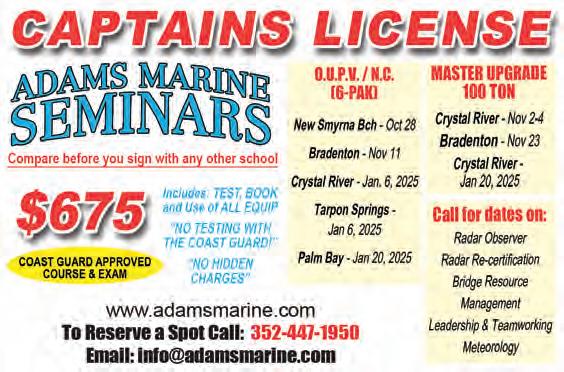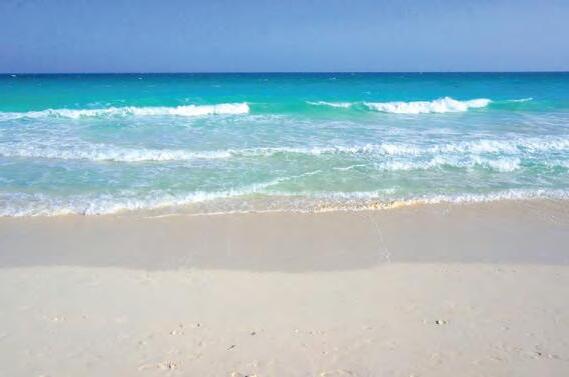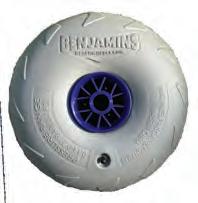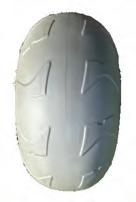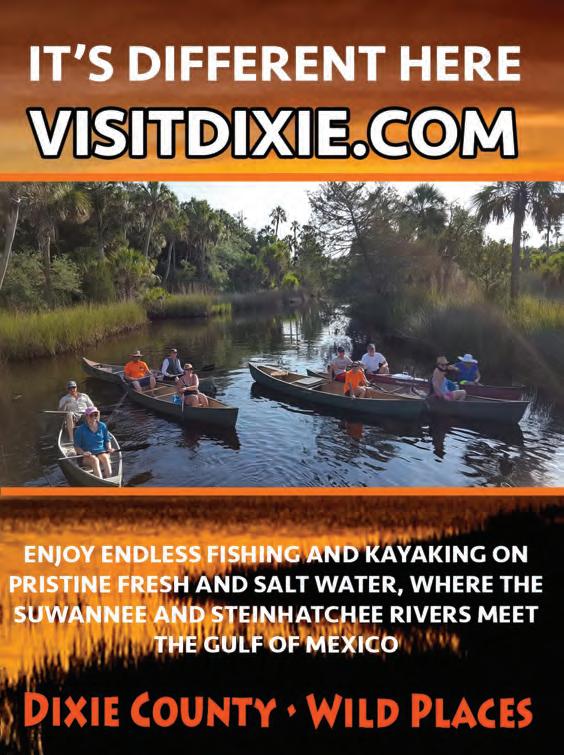


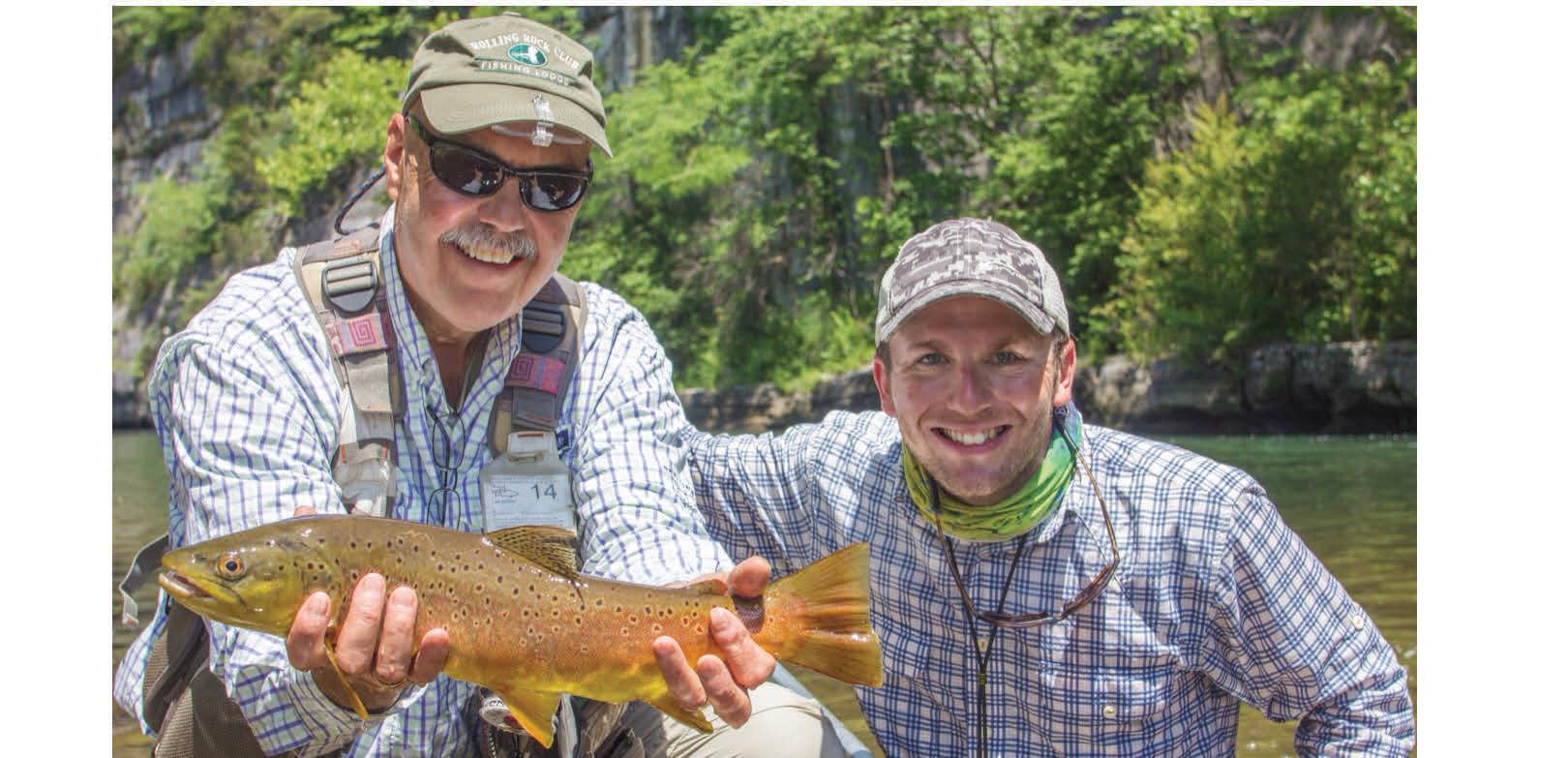


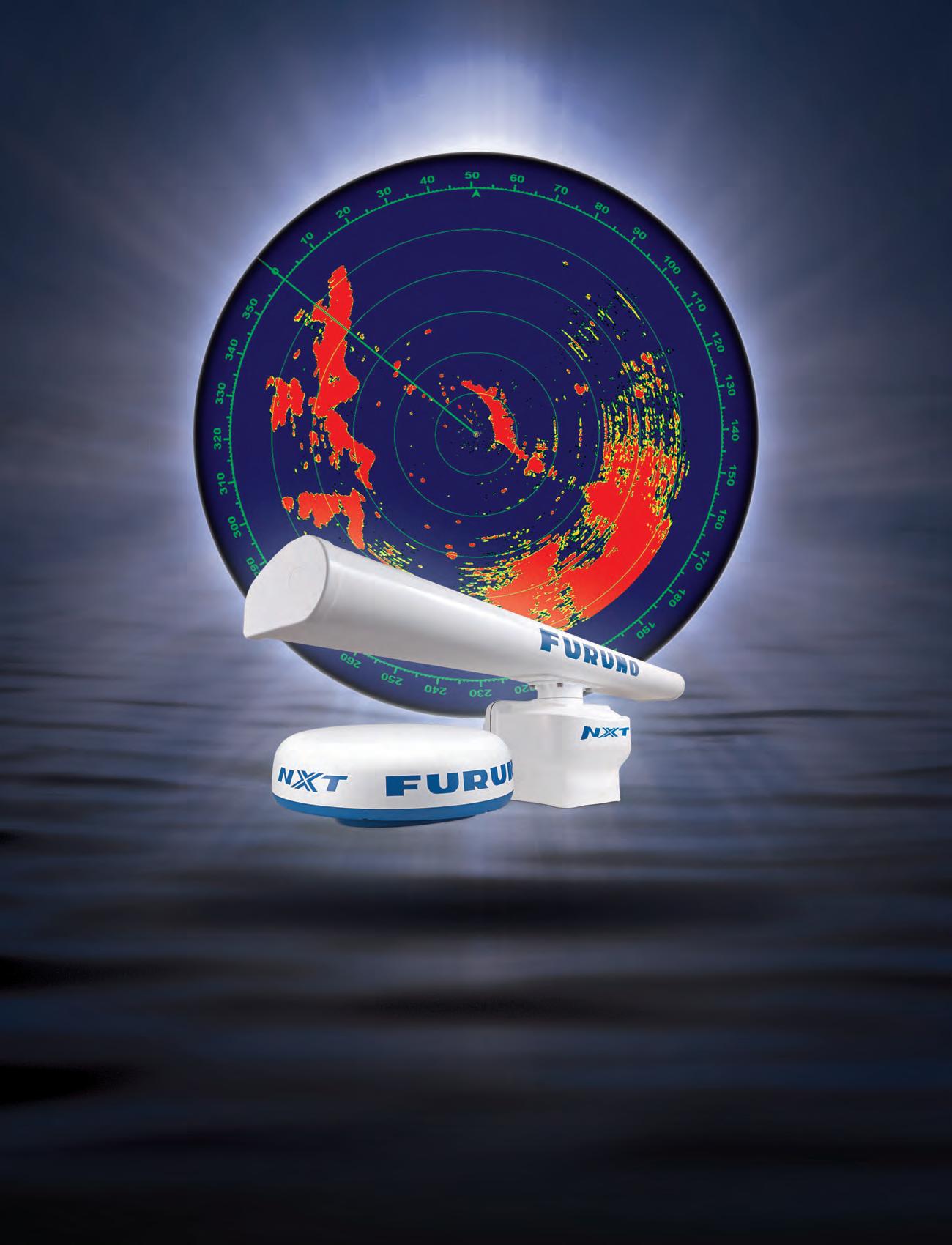










Are you ready to embark on your next on-water adventure? Before you set sail, here are ve things to know about boat insurance.
1. Boat insurance isn’t just for accidents
With comprehensive coverage, you’ll also be protected nancially for theft, vandalism, and unexpected events like storms if you need repairs or replacements due to damage.
2. Accidents can happen to anyone
When accidents happen, boat insurance offers liability coverage for damages or injuries you cause while boating, up to speci ed limits. It can also cover lawsuit costs if you’re sued.
3. Boat insurance can cover medical payments
Boat insurance offers a range of optional medical payments coverage limits, helping to cover medical expenses if you’re in an accident or someone is hurt on your boat, regardless of fault.
4. Most lenders require boat insurance
If you nanced your boat, you’ll likely need boat insurance since most lenders require boat insurance to protect their investment. Additionally, some marinas or municipalities require proof of insurance for docking.
5. Progressive offers specialized boat coverages Ever worry about getting stuck on the water? Progressive’s Sign & Glide® On-Water Towing coverage** can help. It’s an additional coverage that steps in if your boat is disabled or breaks down on the water, paying for on-water towing, jump starts, soft ungroundings, and fuel delivery. Fuel cost isn’t included.
Don’t let unforeseen circumstances disrupt your voyage. Cruise with con dence thanks to Progressive Boat insurance. Because when it comes to your boat, peace of mind is the ultimate luxury.
Scan to get a quote in as little as 4 minutes.
to learn more.



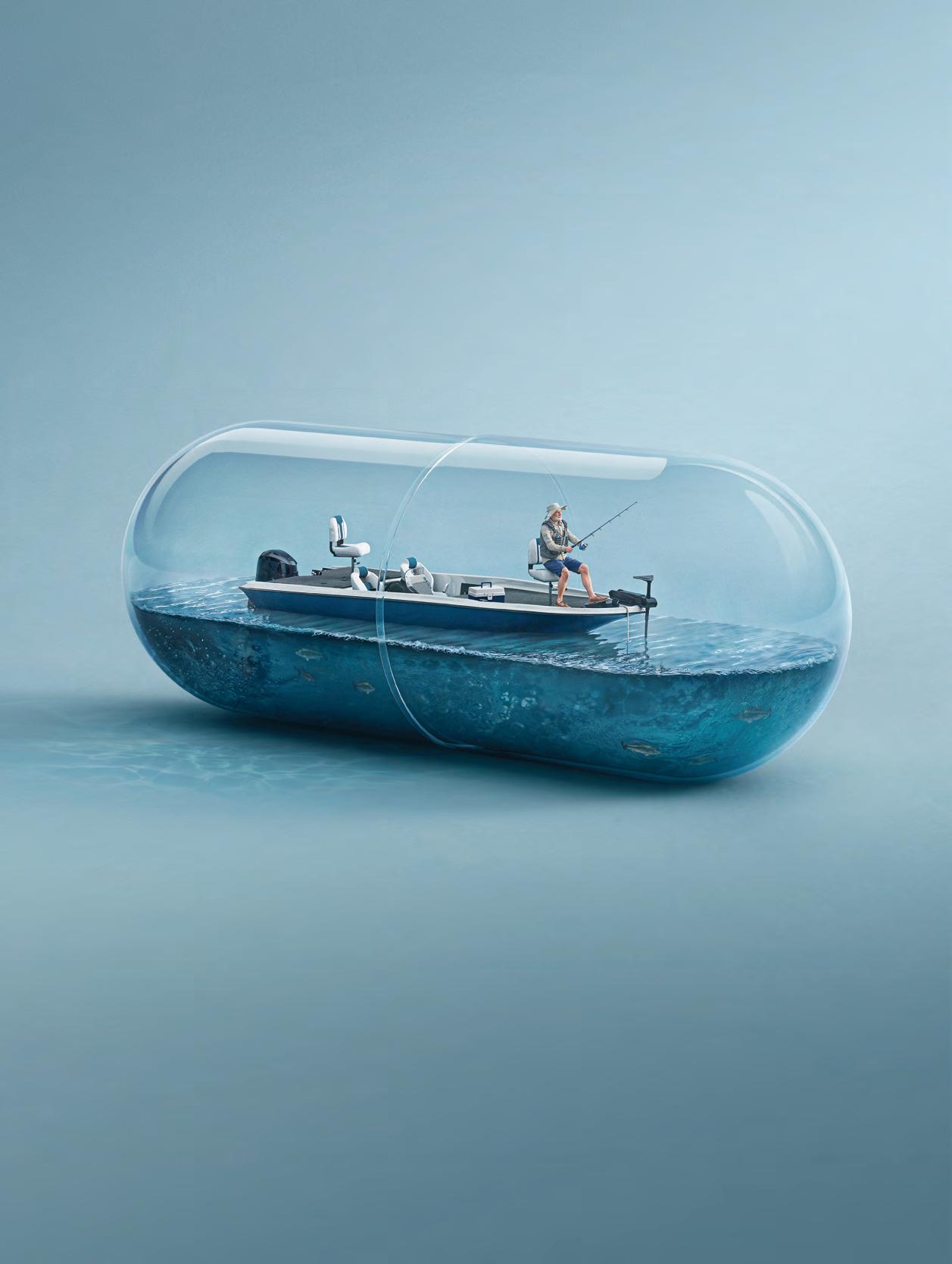
















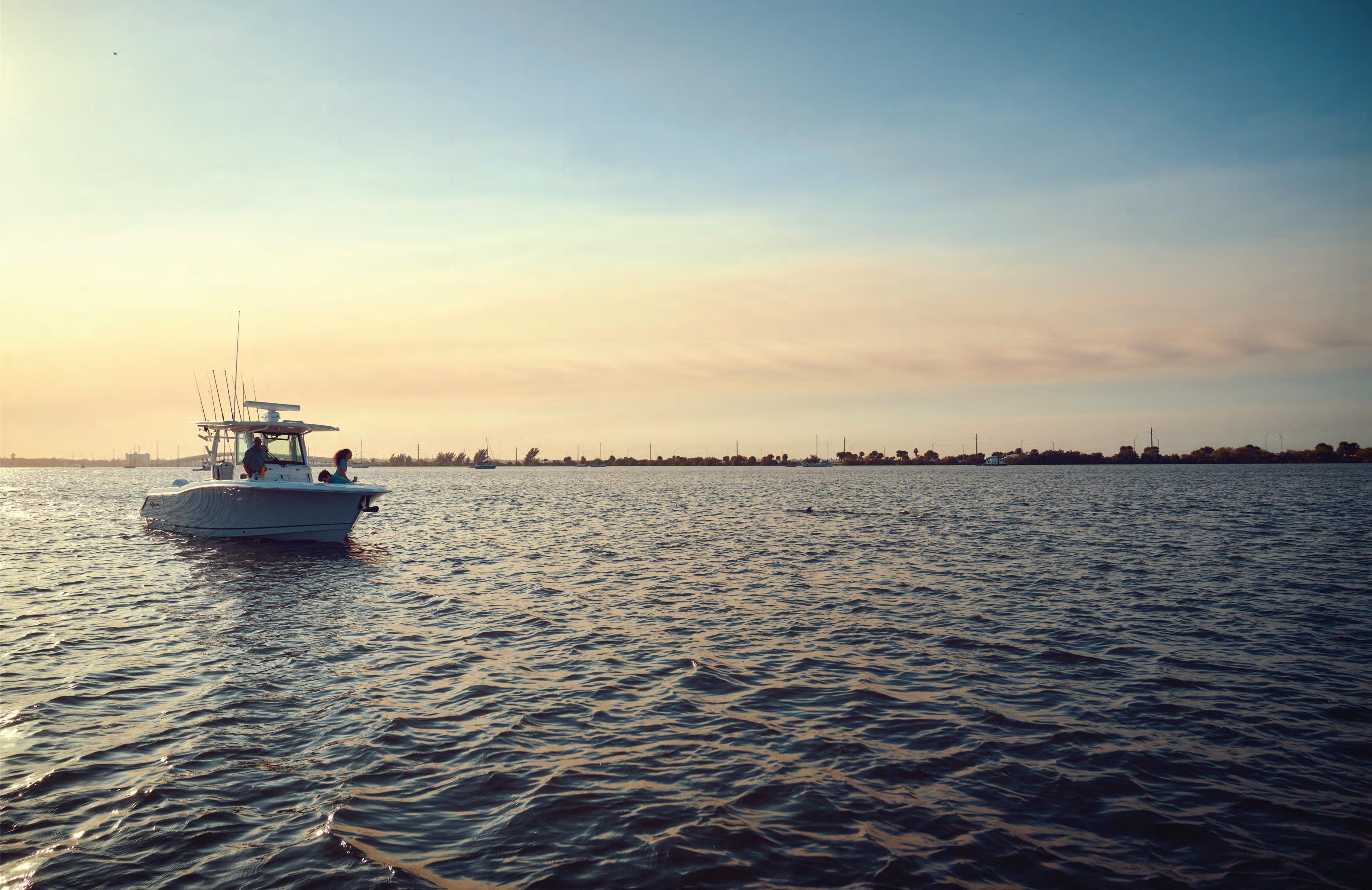

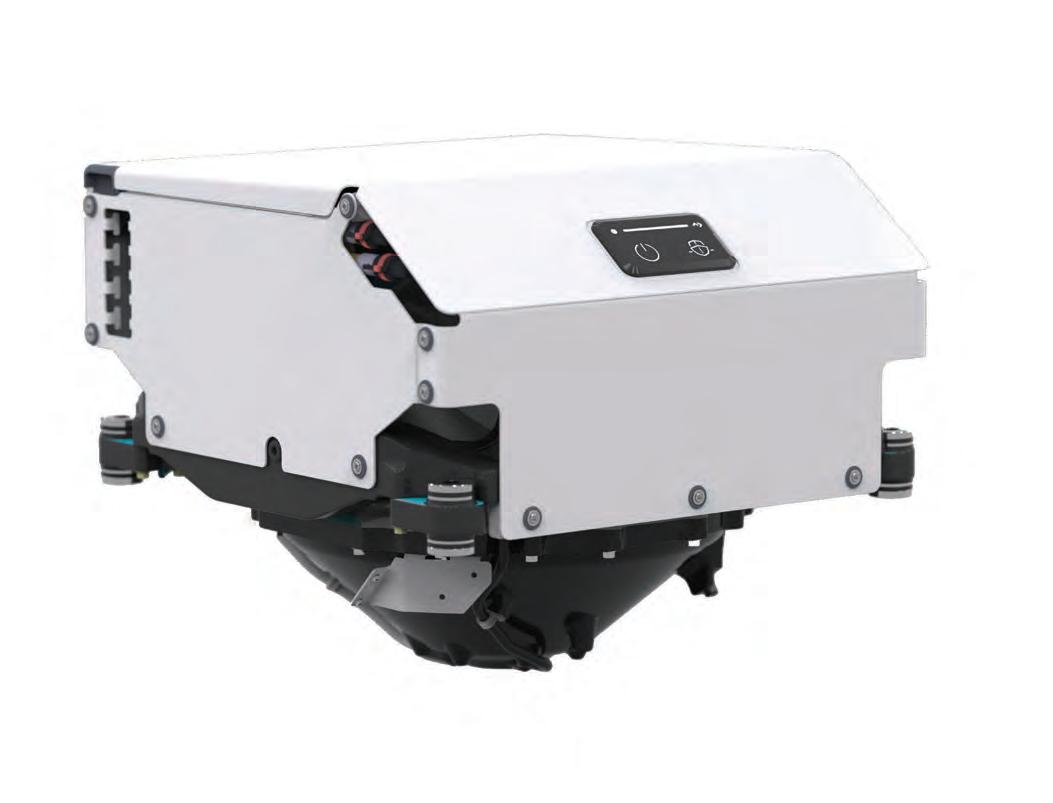


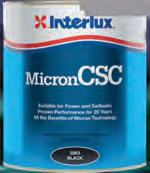








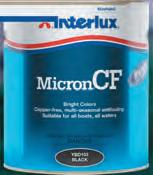
Interlux® fouling control products not only improve your performance by protecting your hull from fouling, they also protect against the spread of invasive species, safeguarding your local waters when exploring new regions, therefore helping you make a difference by looking after the waters that have provided you with enjoyment and freedom for so many years.
Like you, we have a passion for boating. We provide boaters the hull protection they deserve with over 140 years of cutting‑edge science, technology and expertise. You can expect only the best from every Interlux® yacht paint product, providing you the confidence to explore your world.
Relentless performance for every yacht, everywhere, every time. interlux.com





Capt. Mike Smith
Have you ever tried to use big dead baits to catch huge redfish? If you haven’t, then you should.

Many of the larger predatory fish prefer eating fresh, dead baits over live baits so they can save energy.
The odds of becoming an over slot redfish are at least a million to one. An overslot redfish has figured out not only how to avoid predators and how to conserve energy when finding food. That is why dead baits work so well for catching older, wiser and larger redfish.
The best dead baits for redfish are: a large blue crab cut in half, a butterflied large pinfish with its tail cut off, a chunk of ladyfish, and a chunk of bluefish. The key to catching redfish instead of catfish when dead bait fishing is by using enormous dead baits. You want to use baits at least eight inches long. Catfish always seem to find the bait first and most catfish can’t eat an eight inch dead bait.
Quite often you will catch your monster redfish and notice catfish slime on your line. This tells you that a catfish found your bait first but was unable to swallow it. If you are catching catfish with your dead baits, then you have to go bigger.
Pro Tip: Make sure to use at least a 5/0 circle hook and just enough weight to keep the bait stationary on the bottom. If you let the tide drag the bait across the bottom the redfish will have trouble finding it. But if you use too much weight the fish will often feel it and let go of the bait before getting hooked.
Circle hooks are much less likely to get swallowed and mortally wounding the fish, unlike a J hook. A J hook will often get swallowed if you are not constantly paying attention to your line.
When using dead baits for redfish keep the rod in a rod holder. Rod holders are much better at hooking redfish with circle hooks than we are.

Keith caught this monster redfish with an 8-inch chunk of bluefish along a drop off in Florida’s Indian River Lagoon.
When the redfish picks up the bait and swims off with it, the hook will lodge right in the corner of the fish’s mouth.
The best tackle for catching enormous redfish with dead baits is a medium heavy seven-foot-six-inch rod coupled with at least a 5000 series reel. Spool your reel with 30-pound braided line and make sure to have at least a 30-pound leader attached to the hook.
You can certainly catch a 40-inch redfish with a smaller rod and reel combo but the fish will be half dead by the time you get it landed. In that weakened state the fish will sometimes fall prey to a nearby dolphin or shark. There is no sense killing a big breeder redfish that you cannot harvest anyway.
Capt. Mike Smith, owner of Fish Your Ass Off Charters, is an inshore fishing guide who has been fishing the inshore waters, oyster bars and grass flats of Florida for more than 40 years. Reach him at (561) 339-2317, email: contact@fishyourassoff.com or visit fishyourassoff.com.


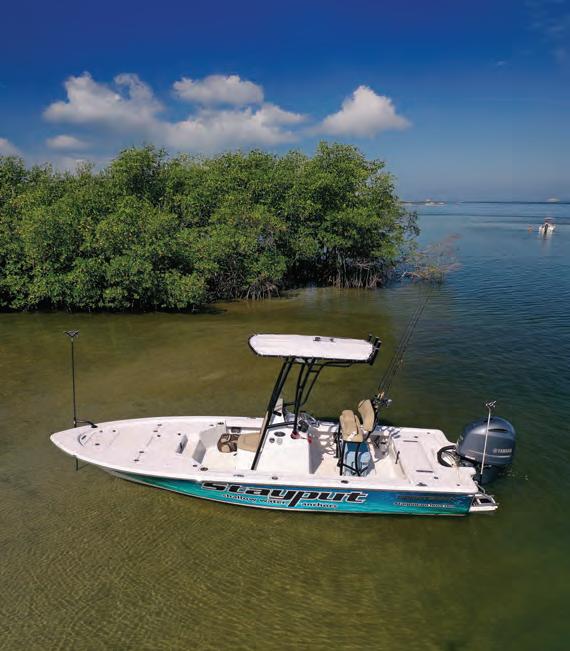
BY NPFL PROFESSIONAL ANGLER JOEY BLOOM
The first cool mornings of fall always bring a little excitement for me. When I back the boat down the ramp and see mist rising off the water, I know the season is changing and the bass are about to do the same. Down here in the Southeast, the fall transition is one of the most unpredictable—but also one of the most rewarding— times of the year.
The key is bait. As soon as water temps slide from the 90s into the mid-70s, shad begin their migration out of the main lake and into the creeks or shallow shorelines. They’re chasing plankton, and the bass are never far behind. If you can find the bait, you’ll find the fish. I don’t even bother making a cast until I see shad flickering on the surface or lighting up my electronics.








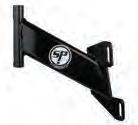

My mornings usually start with topwater or a shad-colored swim jig. A walking bait is one of my favorites to throw across the mouth of a pocket, and it can trigger some of the most violent strikes of the season. I’ll never forget a morning last October when a seven-pounder came out of two feet of water and nearly ripped the rod out of my hand. That’s fall bass fishing— when they decide to eat, they don’t play around.
As the sun gets higher, I shift gears. Shallow wood, laydowns, docks and grass edges become prime ambush points, and that’s when I reach for a squarebill crankbait. I like squarebills because they’ve got just the right wobble and durability to grind through cover. The trick is to make contact—bump that crankbait off a stump, dock, or tick it through grass. Those deflections are what trigger bites. Covering water quickly is important because bass are constantly on the move, shadowing those bait schools.
But not every fish in the lake makes the same move at the same time. Some of the bigger, older bass stay out deeper longer. For those, I keep a Carolina rig handy, and I’ve had great success pairing it with Bait Cave Customs hand-poured soft plastics. That slow drag across a secondary point can tempt those stubborn deep fish that won’t chase a moving bait.
Weather plays a huge role, too. A cold front will slow everything down, and that’s when I switch to finesse—something like a Bait Cave Customs, Cave Club finesse worm on a shaky head, worked methodically. On the flip side, a cloudy, stable day can set off a feeding frenzy, and that’s the time to throw reaction baits and keep covering water. Fall fishing here is a constant adjustment game, and you have to be willing to change with the conditions.
At the end of the day, the fall transition is like putting a puzzle together. The pieces change daily—sometimes hourly—but once you figure out where the bait is, how the bass are relating, and what they’ll react to, the action can be phenomenal. It’s the season where I cover the most water, throw the widest variety of baits, and stay the most flexible.
For me, that’s what makes fall in the Southeast so special. It’s unpredictable, challenging, and full of opportunity. And when everything lines up, it’s some of the best bass fishing of the entire year. With the right mindset—and the right tackle—you can make this season one to remember. Follow all of Joey Bloom’s fishing and fun on Instagram, Facebook, and YouTube at Joey Bloom Fishing.

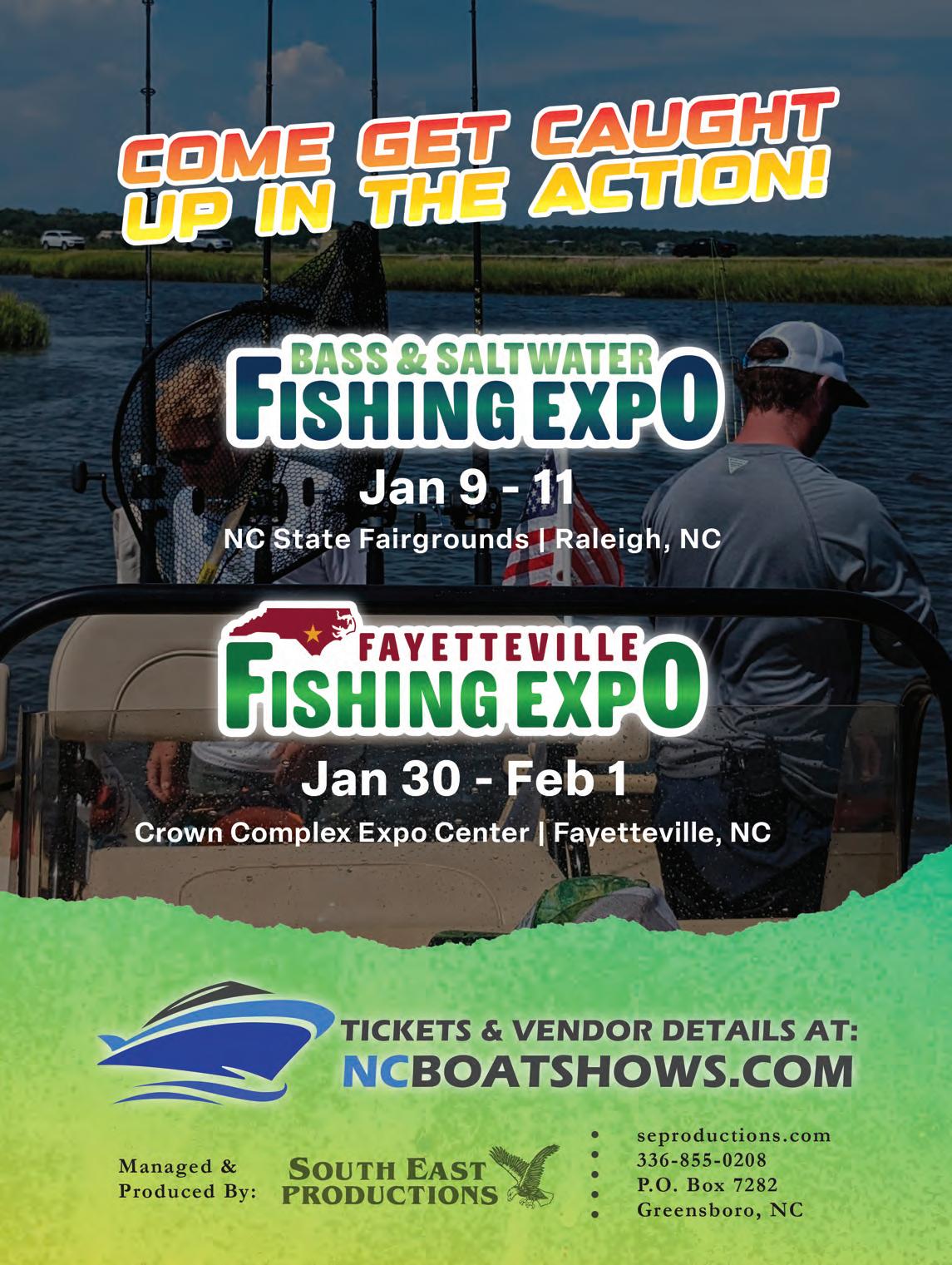
By Andrew Howell
Nestled deep in the Blue Ridge Mountains is one of North Carolina’s most popular trout fisheries, the Davidson River. It is known as a popular tourist destination for fall foliage and yearround cool temperatures, and also widely regarded as one of the best trout fisheries in Western North Carolina. In 2021, Tropical Storm Fred flooded parts of WNC and caused significant damage along the Davidson River. The riparian buffer, which provides year-round shade to rivers and keeps them cool, makes it the perfect habitat for rainbow, brown, and brook trout. In 2024, Hurricane Helene destroyed lots of mountain towns in WNC and Eastern Tennessee, flooding rivers and lakes in those respective areas and causing extensive damage to river beds and riparian buffers, including another hit to the Davidson River. After the initial response, and the area started to begin the long restoration process, our first thought as fishermen was, “How did the fish fare?”
As the months passed after the storm, we observed that there were still plenty of fish left in the river. However, the bug life had clearly taken a big hit because rocks and trees were ripped from the ground, therefore displacing the bugs and forcing bug life cycles to completely start over. Additionally, we noticed that after catching a fish, you could often catch a few more in the same area, but then you would have to travel a long distance to find another group of fish.
Throughout the fall and winter, these patterns persisted with the fish
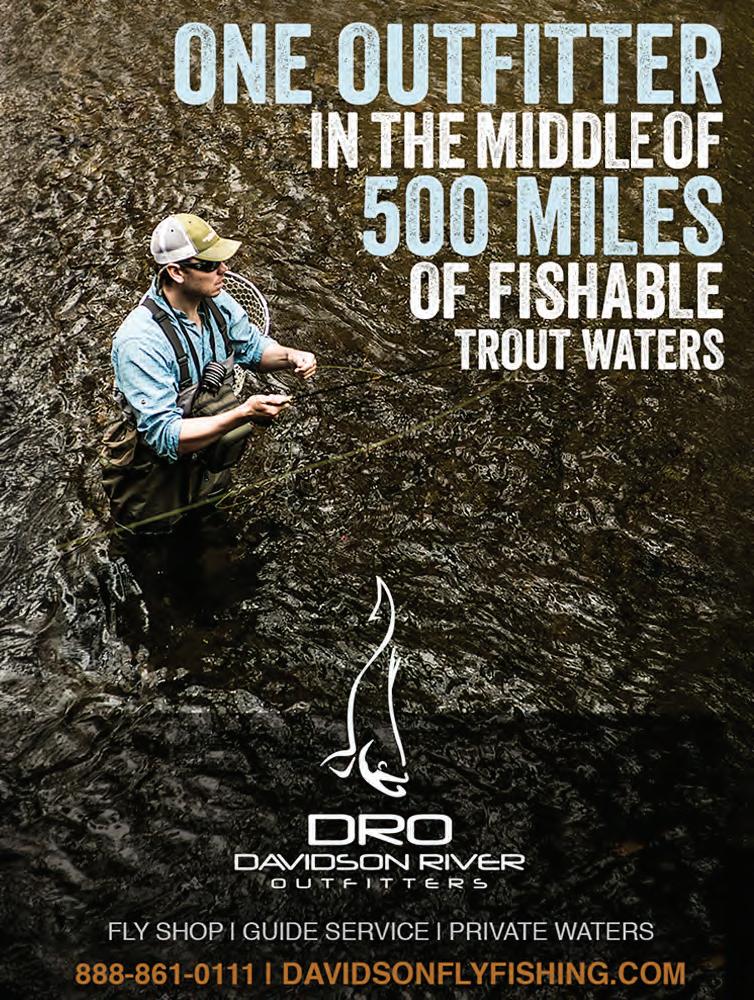
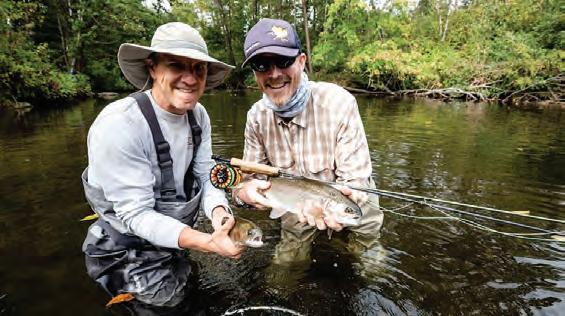
clustering together and bug life being virtually nonexistent. Fortunately, things began to change as spring arrived and we began to see much more bug life, and the fish fed increasingly more on the familiar bugs they once relied on before, indicating a slow return to our normal conditions.
The Davidson has always been a technical fishery, but even more so now than before Hurricane Helene. For those planning to travel to the Davidson River, make sure to bring your spools or 6x and even 7x tippet, pack lots of patience, and don’t be discouraged if the fishing is a little tough at first. As I always say, if you can catch fish on the Davidson yearround, than you can catch trout anywhere in the world. Staying attentive to the hatches remains critical, as there are always fish that are willing to sip a dry fly on the surface, which makes for an awesome winter day when you have been stuck in the house tying flies for months.
Once you’re on the river, fish slowly, make long casts, and mind your wading. One of the biggest mistakes I see is anglers charging straight towards their fish; your legs create waves as you approach, and the fish sense something unnatural, becoming skittish if you move too fast or loudly. By fishing a light line, taking your time, and approaching the Davidson with patience and the right techniques, your odds not only improve, but the river can offer spectacular fishing year-round. I hope these tips help you land a few more fish, and I look forward to meeting you on the river or in the fly shop soon!
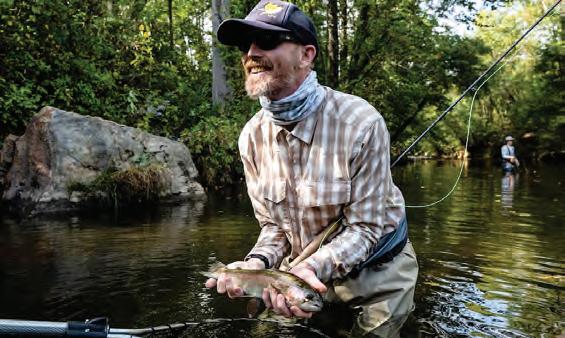


By Ronnie Parris
Hey folks, I hope you are all doing well. Loving this awesome fall weather. This is just mountain paradise right now.
I’ve been trying not to complain, but come on NCWRC we’ve been waiting and waiting for you to get Fontana back to the glory days of walleye fishing. Last couple of years we’ve gotten some small walleye stockings, but the problem is, when the state stocks walleye they are stocking such small amounts, in a lake the size of Fontana, it’s like pissing in a farm pond. It just don’t amount to anything. Plus,

Fontana Lake Fishing Guides – Ronnie Parris, Owner & Head Guide LAKE, CREEK & RIVER FISHING • FLY FISHING • CAMPING
We o er both full and half day trips with the most competitive rates available. All tackle and supplies you will need while you are on your trip is covered by our listed price.
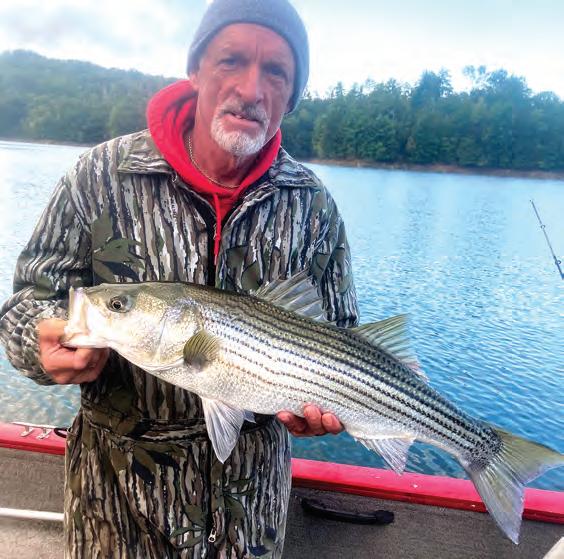
you have to figure over half get eaten by our spotted bass before they get big enough to even think about spawning. We all know the main problem is the blueback herring, which run up in the river where the walleye and white bass spawn. The problem is they’re there at the prime spawning time and they’re eating most of the eggs and fry from the walleye and white bass.
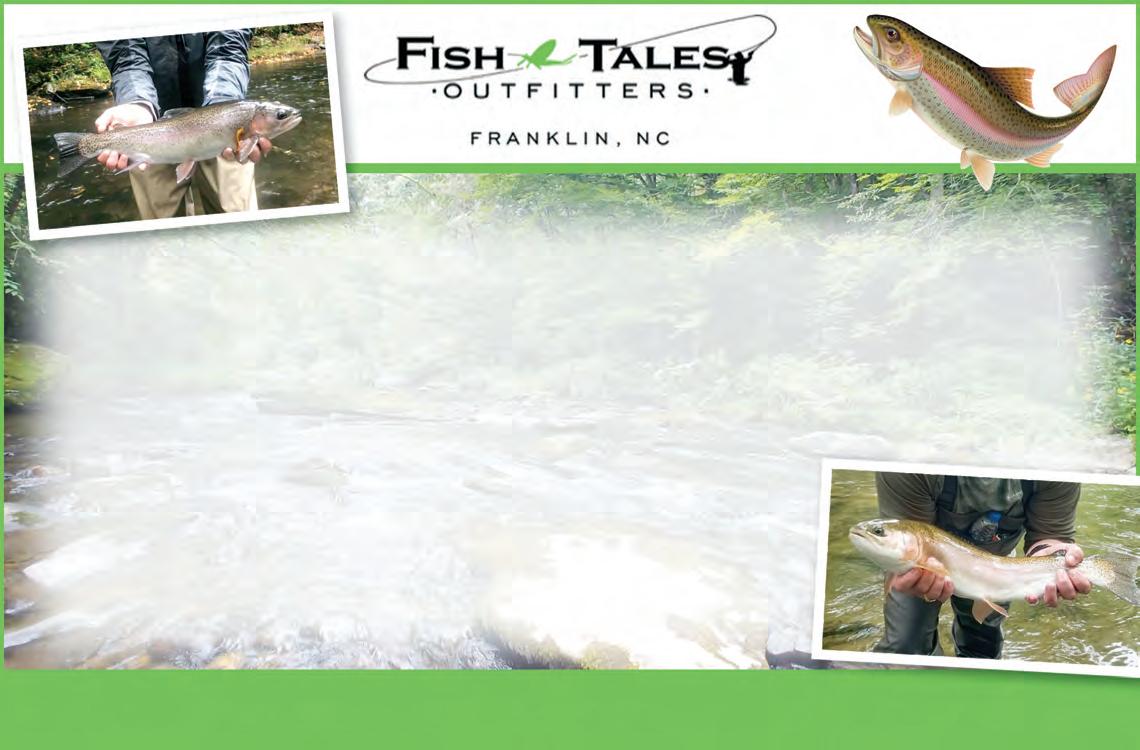
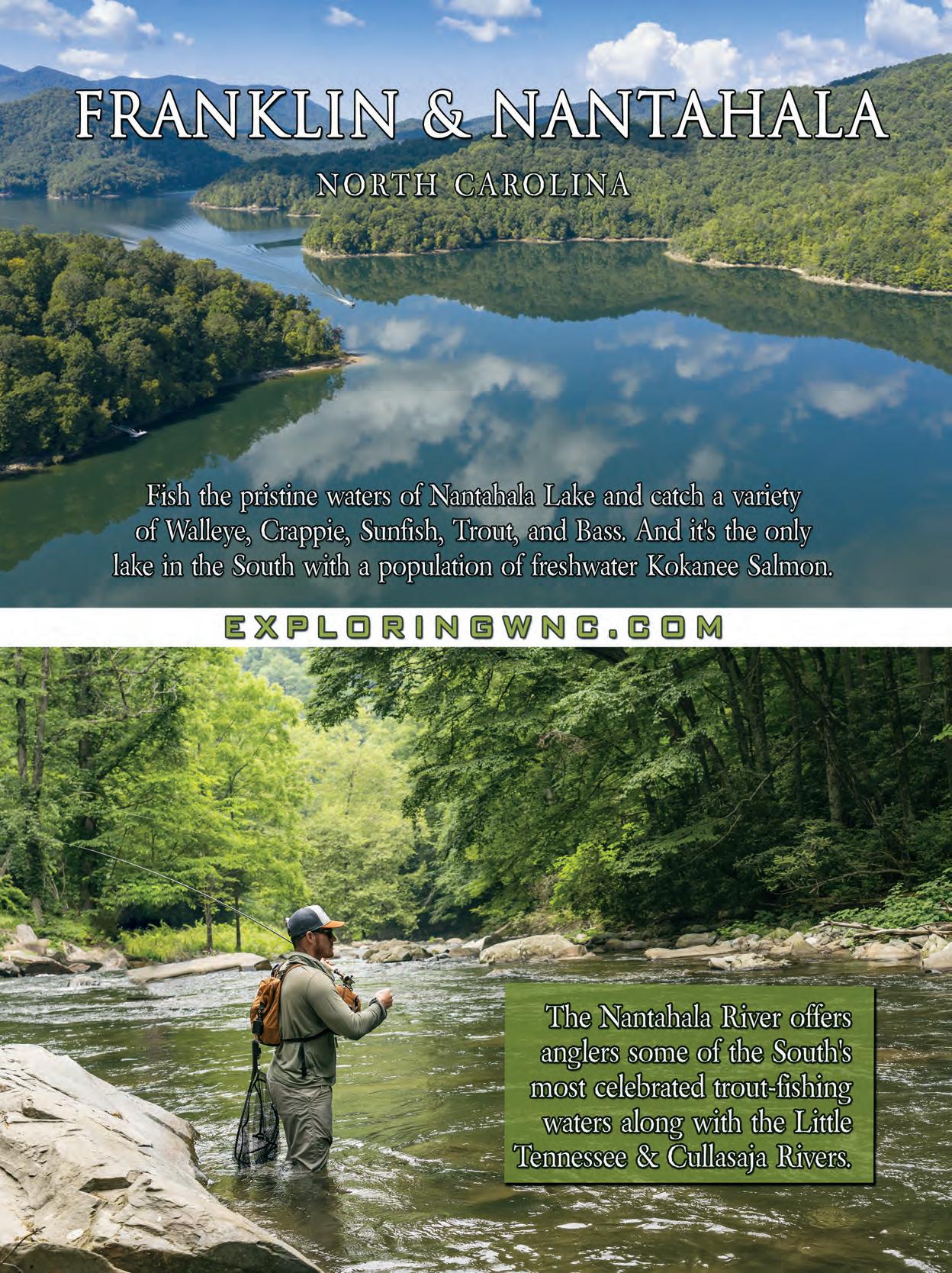
Darnell Farms is a true agro-tourism experience for the whole family. We are in a beautiful valley along the banks of the Tuckasegee River in Bryson City, North Carolina.
We’re an active, second-generation family farm. Our farm produces 100 acres of strawberries, pole beans, sweet corn, pumpkins, squash, a variety of tomatoes and much more.
Darnell Farms’ passion for farming sprang from the patriarch, Jeff Darnell’s, passion for land preservation. During the 1970’s in Western North Carolina, there was an interesting boom in land sales for development. While this added population to the rural area, it also took out beautiful and viable farmland, which was already few and farbetween in these Southern Appalachia’s. Finding nutrient rich valleys located amongst water was becoming increasingly difficult, as people began building on precious land. Jeff Darnell decided as a young man that he was going to counteract the booming build for selling off the farmland, and he started farming every piece that he could. Today, the Darnells farm over 100 acres of precious farmland in Western North Carolina, all while working towards putting their farmland into Agricultural Preservation Programs through Mainspring Conservation Trust- ensuring that the land stays farmland for generations to come. We have several festivals throughout the year. In addition, we host special events and activities for various organizations in our area. We also offer educational field trips to our farm. During our field trips we love sharing information about farm life, methods used to raise our crops, and how to be good stewards of our precious land. We even discuss the history of the lands we farm, including the ties to the Eastern Band of Cherokee Indians, who are literally our next-door neighbors.

Our mission is to educate, protect, and influence the preservation and understanding of Appalachian Agriculture in the Great Smoky Mountains of Western North Carolina, by making our working farm a memorable experience for everyone.


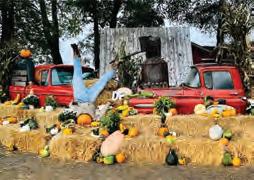

By Scott Norton
ummer is over and the fall transition has been happening for weeks. The upper elevations hit it first while the lower elevations will catch up. How do you know that you are in a transition? Pay attention to the night temperatures and that will tell you everything. When the nights start getting cold is when everything kicks in. If you get to the lake and you have to wear a hoody or a jacket, chances are it is already happening.
The day temperature can get really hot and that could confuse some fisherman on what is going on. If you are one that goes often you will also notice a downward trend of water temps. You will notice the summer holes will all of the sudden become dead and you will have to cover water to find them. This is an exciting time to fish as bass get fired up to feed up for the winter months.
This time of year you can catch them on anything. I find that downsizing helps because they focus on the smaller forage. Big bass will cling to spars grass, so if you find healthy grass among the dying grass you can be in a good situation. This will make catching them predictable, knowing where they should be. If you are catching lots of small bass in the shallows you may have to fish deep to target the larger sizes. When you find bait balls, be sure to use a baits with blades to get hungry bass to pay attention to your bait instead of the bait balls.
These fish are on the move, so keep that in mind. You may have to move around and cover lots of water. Bass won’t all be in one spot, they
Continued, see HAPPY HUNTING Page 20


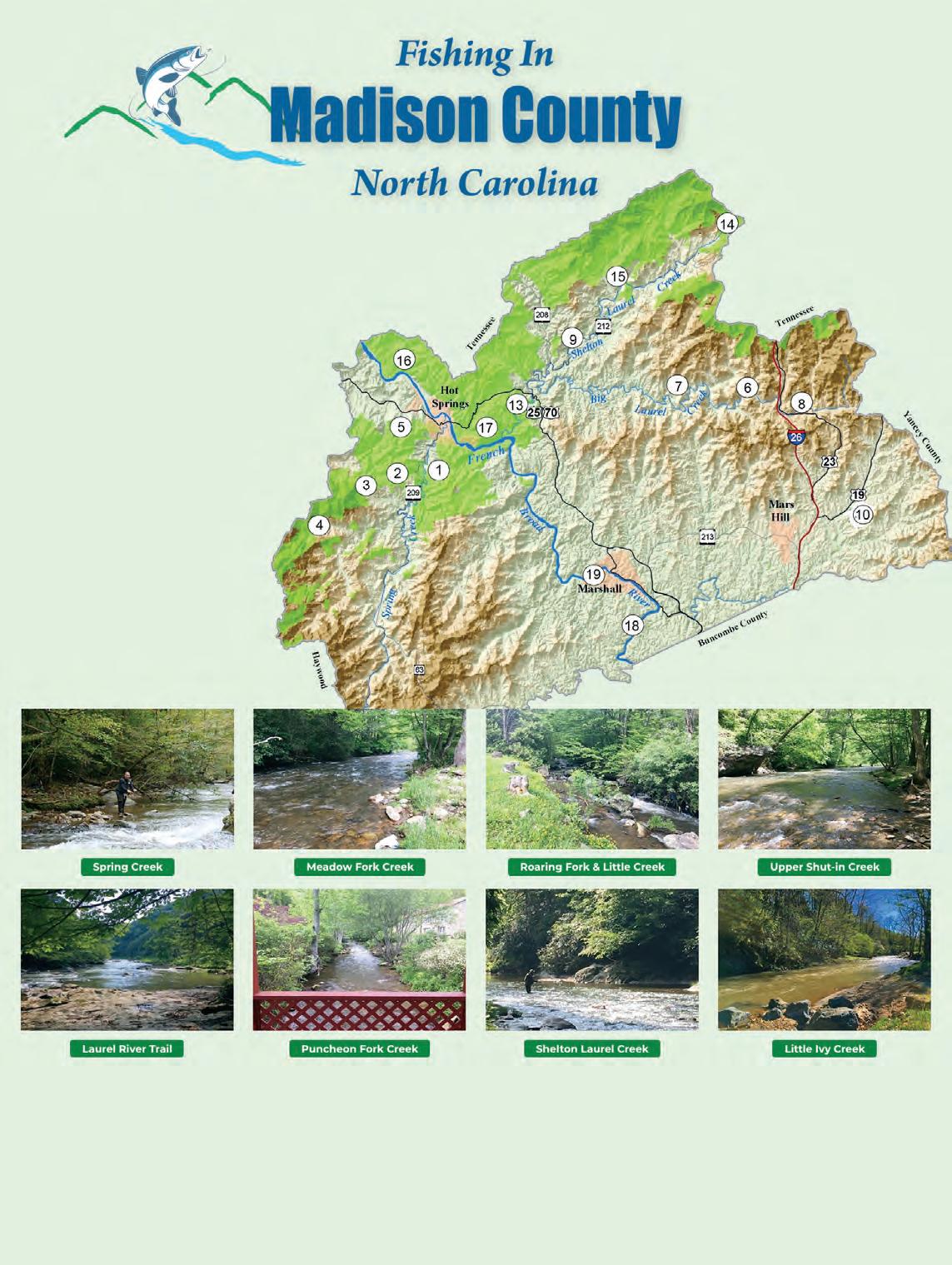
By David Ramsey
Just what if it didn’t really end in 1977 on the bathroom floor of a Memphis mansion? What if, instead, he has been spending his golden years right here, among the hills and hollers of the good ol’ southern Blue Ridge? Well, the absolute, unadulterated, somewhat but not really, true truth is—he has been. Sort of. For about the last 15 years. Guess I better back up a bit and explicate.
The day started out with lightning. No, I didn’t suffer a direct strike to my already COVID-weary brain, as you might be thinking by now. But to hear my perpetually electrical-storm-freaked-out wife tell it, I likely would have by now and probably will one day—if not for her. I just wanted to go fishing in the Smoky Mountains—but, as she ALWAYS does, she just had to go and look at the weather forecast for the area to which I was headed. That’s when the sermon (which I can recite by heart) began. (Hey! Maybe when they cut the Weather Service enough to change forecasting into foreguessing, she’ll stop paying attention and I can go fish in peace! Okay sorry, that’s not funny. I really, truly do not want our Weather Service gutted, okay?)
I’m often reminded, by someone who should know, that I might be a little crazy, but even she’ll admit I ain’t stupid. So, I eased the tension of the moment with a solemn promise not to set foot in woods or waters on this trip if even there was the slightest hint of an electrical storm brewing, and that I would not even remove from the travel tube any of my various graphite superconductors (fly rods). Of course, I sealed the deal by inviting her to go with me (told you I wasn’t stupid.) And then all was well and a good day lay ahead, not to mention a certain Smoky Mountain stream,

alleged by some folks to hold four different strains of Salmoninae,—plus, I still had another compelling reason for this Smokies road trip concerning the aforementioned King of Rock & Roll.
As I crossed over Soco Gap and descended onto the Cherokee Qualla Boundary (despite the tourist-pleasing “reservation” signs at the entrances, their land is not actually a government reservation), I felt the familiar, fishwater-induced rush building up inside. And then, almost as quickly as it came on, the rush was quelled by a massive double clap of thunder. Within seconds, waves of wind-driven rain came at us head-on and hard, and I could barely see the lines on the extremely steep and winding mountain road. Looked like the fishing trip might be a wash (get it?), but I eased on down the mountain, praying hard we wouldn’t end up taking the fast and direct way down after missing one of the 26,000 hairpin curves.
We finally reached the valley floor, facing both a continuing torrent and the now certain fact there would be no fishing that day. After a few more bummed-out, rain-weary miles, suddenly a small sign by the road snapped me out of my funk and reminded me of my trip’s other purpose. With spirits now lifting, I was about to make a right turn straight into the parking lot of the semi-famous and much-beloved Cherokee Elvis Museum.
The building which houses the museum is quite small and left us to wonder just how much of the legendary artist it might really have to show. Once inside, we quickly realized two things: one, there really was a lot, I mean A LOT, of Elvis in the place; and two, the operator/proprietor, Mrs. Dee Smith, was as much a part of the place and its spirit as any photograph or historical article on display. We found ourselves more captivated by her stories and her authenticity as a devoted, lifelong Elvis fan than any of the thousands of items she had collected and exhibited.
Mrs. Smith spoke with a sense of wonder and awe of the two live Elvis performances she attended in the early 70s, almost as if they had happened last week. She related how countless other fans had given her items for the museum over the years, and she shared the stories that came with each of those treasures. Every imaginable kind of memorabilia lines walls and shelves. Elvis lamps, glassware, shirts, paintings, toys, dolls, even an unopened set of Elvis Pez dispensers are some of the things you’ll see. There are hundreds of books on Elvis, records, tapes, concert tickets and souvenirs and the list goes on and on. If you love photographs and you are an Elvis fan then this is the place for you; there are literally hundreds.
But while we were certainly fascinated with the countless items wedged into this small space, paying tribute to one of the world’s best known and loved musical artists, we came to appreciate even more, Dee Smith, the warm, open and truly genuine person who chose many years ago to share, free of charge, her admiration for that artist.
Go there and you will find Mrs. Smith sitting in her favorite chair, small record player nearby, playing her favorite Elvis songs. She will smile an honest smile, welcome you warmly and within a few minutes you, too, will declare that Elvis lives and can readily be seen at an amazing little spot (right next to that special trout stream I didn’t get to fish,) deep in the Great Smoky Mountains.
NOTE: The Cherokee Elvis Museum is located in Cherokee, NC on Highway 19, right beside Littlejohn’s Campground and a spit and a whistle from Soco Creek. The hours are 11:00 am until 3:00 pm, Mon thru Fri and closed on Sat and Sun. Ph. 828-497-0791
David Arthur Ramsey is an outdoor photographer, writer and conservationist, born and raised in the mountains of northeastern Tennessee. His outdoor writing and photography have been published locally, regionally and nationally and are most often associated with work to preserve and protect threatened lands and waters throughout the Southern Appalachian Mountains.

RALEIGH, N.C. (Sept. 5, 2025) – The N.C. Wildlife Resources Commission (NCWRC) will implement Delayed Harvest Trout Waters regulations on 33 trout waters beginning Oct. 1.
Under Delayed Harvest Trout Waters regulations, only catch-andrelease of trout is permissible from program waters between Oct. 1 and June 5, 2026. No natural bait may be possessed, and anglers can fish only with artificial lures with one single hook. An artificial lure is defined as a fishing lure that neither contains nor has been treated with any substance that attracts fish by the sense of taste or smell.
NCWRC staff stock Delayed Harvest Trout Waters from fall through spring with high densities of trout to increase anglers’ chances of catching trout. Delayed Harvest Trout Waters, posted with diamond-shaped, black-and-white signs, are popular fishing destinations for anglers who enjoy catch-and-release trout fishing.
Anglers should be aware that stocking locations along streams may be different than in the past due to hurricane damage impacting the stocking truck and angler access.
“The changes are minimal when you take into consideration the devastation the storm caused to Western North Carolina,” said Western Regional Fishery Supervisor Doug Besler. “The storm made considerable alterations to some of the landscape where trout fishing occurs. Therefore, we will not stock areas that are still either closed, or dangerous to fish due to access or major habitat changes.”
Stream closures from Helene while debris cleanup continues are updated on NCWRC’s website at ncwildife.gov/trout.
The storm also caused major damage to one of NCWRC’s fish hatcheries, the Armstrong State Fish Hatchery in McDowell County. NCWRC had planned to use Armstrong to offset a scheduled January
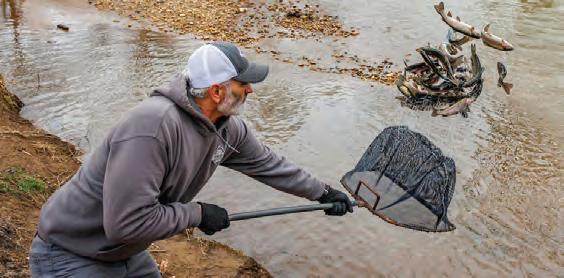
2025 shutdown of the Bobby N. Setzer State Fish Hatchery for a major renovation. That project had to be paused while staff work to resume operations at Armstrong. Armstrong Hatchery is expected to be repaired and fully operational by mid to late October, and renovations to Setzer are expected to begin by December of this year. It will take approximately two years to complete the Setzer renovation. Both hatcheries are instrumental in the agency’s trout stocking program.
“Trout fishing in North Carolina’s western region is not only a popular sport. It has a $1.38 billion impact to our economy and supports thousands of jobs,” said Besler. “During the Setzer renovation, we will continue to make trout management a priority and are actively working to reduce impacts to anglers to ensure trout fishing will robustly continue in North Carolina for the near future and for future generations.”
For more information on trout fishing and stocking, visit ncwildlife. gov/trout and to follow the progress of the Setzer renovation, visit ncwildlife.gov/setzer.
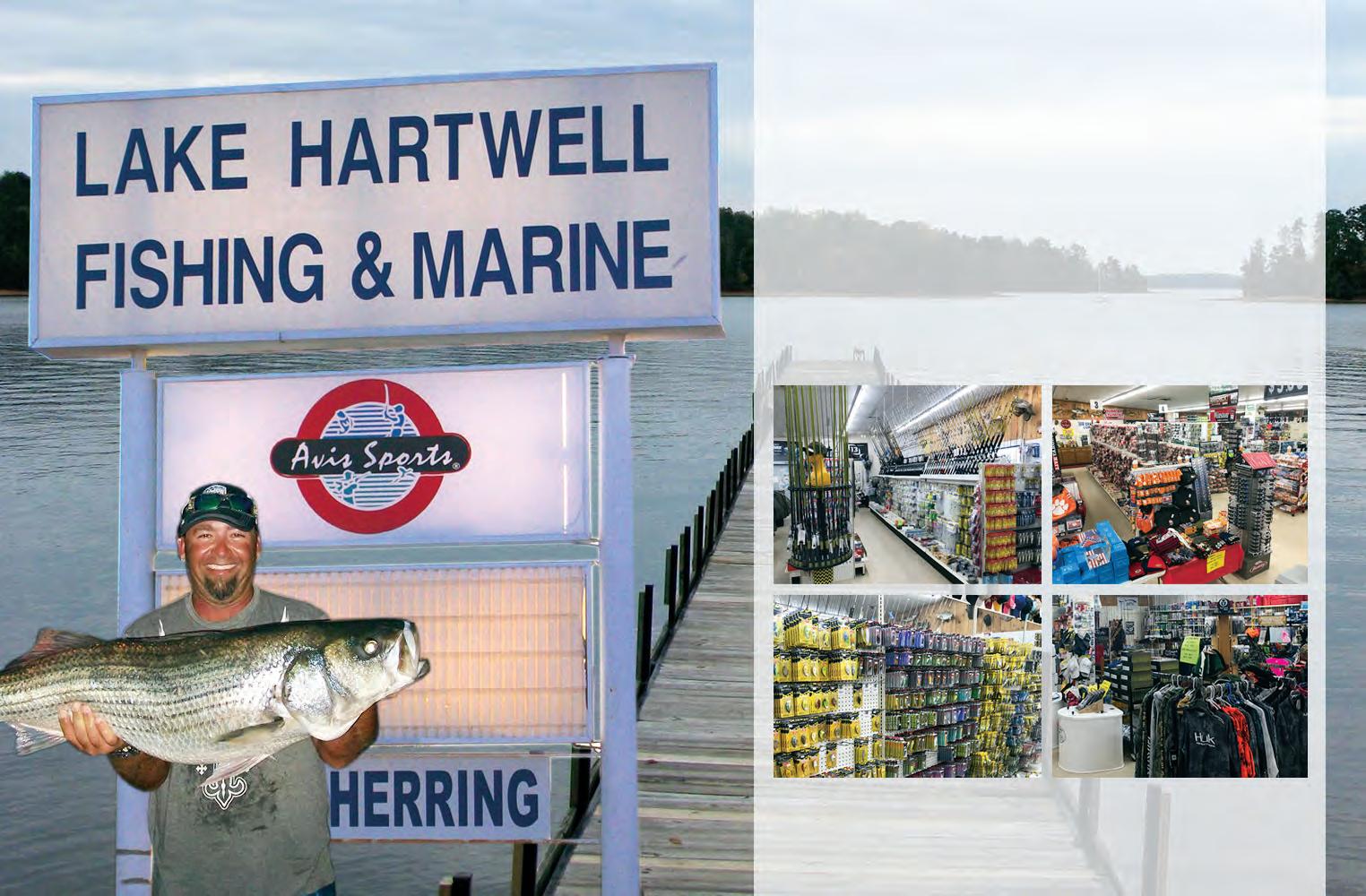
• An artificial lure is defined as a fishing lure that neither contains nor has been treated with any substance that attracts fish by the sense of taste or smell
• An artificial fly is defined as one single hook dressed with feathers, hair, thread, tinsel, rubber, or any similar material to which no additional hook, spinner, spoon or similar device is added
• Season is open from August 1, 2025 to February 28, 2026
• No bait restrictions
• No minimum length limit
• Seven (7) trout per day creel limit
• No fishing allowed from March 1, 2026 to April 3, 2026
• Then from 7:00 a.m. April 4, 2026 to July 31, 2026
• No bait restrictions
• No minimum length limit
• Seven (7) trout per day creel limit
• There is no closed season for fishing on power reservoirs and city water supply reservoirs designated as trout waters
• October 1, 2025 to June 5, 2026

• No trout may be harvested or possessed
• Only artificial lures having one single hook may be used
• No fishing allowed at all between 1/2 hour after sunset on June 5, 2026 and 6:00 a.m. on June 6, 2026
• At 6:00 a.m. on June 6, 2026 these waters open to fishing for youths under 16 years old under Hatchery Supported Trout Waters regulations
• No bait restrictions
• No minimum length limit
• Seven (7) trout per day creel limit
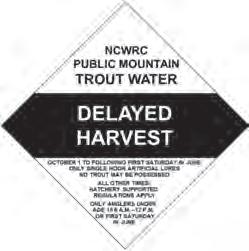
• At 12:00 p.m. on June 6, 2026 these waters open for all anglers under Hatchery Supported Trout Waters regulations
• Season is open year-round
• Only artificial lures having one single hook may be used
• You can only keep four (4) fish
• The four fish must be at least seven (7) inches long
• It is unlawful to possess natural bait on your person while fishing

• Natural bait is defined as any living or dead organism (plant or animal), or parts thereof, or prepared substances designed to attract fish by the sense of taste or smell
• A single hook is defined as a fish hook with only one point

• Season is open year-round
• No trout may be harvested or possessed
• Only artificial flies and lures having one single hook may be used
• It is unlawful to possess natural bait on your person while fishing

The Special Regulation classification allows the Commission to implement site specific regulations on unique trout fisheries in the state that do not fit into existing categories. The regulations for each water body managed under Special Regulation will be displayed on each sign.

By Tom Champeau, Pisgah Chapter of Trout Unlimited
The Blue Ridge Parkway Visitor Center at Craggy Gardens has an excellent display about Sky Islands; why they support species that originated from northern (boreal) regions of the North American continent, and why these habitats are threatened by climate change.
Over the history of the Earth, ice sheets have migrated from the polar caps many times. The latest major glacial advance period occurred over the past 2.5 million years ending with the Wisconsin Glacial Episode about 11,000 years ago. Since then, glaciers have retreated during the current inter-glacial period as a result of climate warming.
Boreal plant and animal species, including eastern brook trout, had their geographic ranges expand during glaciation into the southeastern part of the country. As the glaciers retreated, these species persisted in the region as the climate warmed, and now exist in the higher elevations. The cool, moist conditions of the southern Appalachian mountains and ridges provide the last remaining refugia for many boreal species, and are referred to as ecological sky islands.
Climate warming is being accelerated by greenhouse gas emissions since the Industrial Revolution. Southern Appalachian Sky Islands will experience reduction in habitats that support many boreal plant communities and animal species.
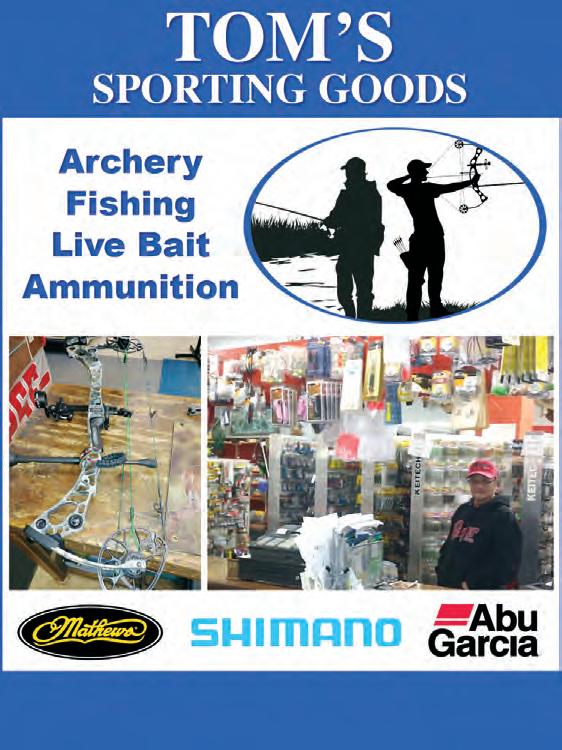

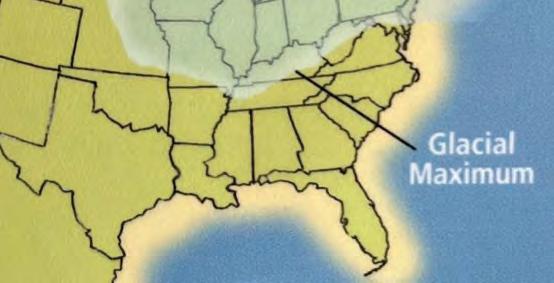
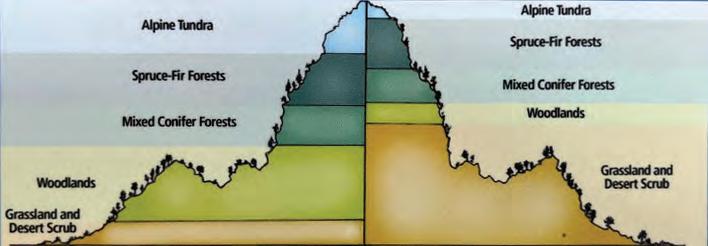
It is uncertain how future conditions will affect Southern Appalachian Brook Trout (SABT). Scientists don’t know how SABT will adapt to a warmer climate, but know that as water temperatures exceed 70 degrees, SABT survival is reduced. One thing is for sure: More frequent and prolonged periods of water temperatures over 70 degrees will imperil SABT populations in many western North Carolina mountain streams.
Key conservation strategies are the protection of headwater seeps, springs, and tributaries. Protecting and increasing groundwater inputs and riparian tree canopies along streams are critical to maintaining cooler water temperatures.
Collaboration between the North Carolina Wildlife Resources Commission, the U.S. Forest Service, and the Great Smoky National Park, Trout Unlimited, Eastern Brook Trout Joint Venture, and other partners, has resulted in many conservation projects to improve aquatic habitat, increase conductivity between streams, increase SABT

By Jim Mize
Humility Creek is not its real name. It’s just a better name. Besides, if I used its real name, you might recognize the stream.
Let me describe Humility Creek and you’ll understand. For starters, casting here reminds me of throwing a thread through a straw. The trees on Humility Creek reach across to shake hands, leaving a narrow, crooked tunnel underneath. Going forward and back, your line has to move and unfurl inside this feathery channel of branches. Typically, this must be attempted while hunched over, peering around some obstacle and casting across your body.
To make matters even more challenging, these trees crossed somewhere eons ago with Venus flytraps. In particular, the hemlocks can snare the smallest fly with their outstretched fingers, closing their grasp around them like a Venus flytrap engulfs a moth. If you fish a fly with a dropper, the fingers of these branches can tie a knot with them before you can turn around to witness it. Invariably, it will be a foot beyond your reach.

I still remember my first trip to Humility Creek. I developed a metric that says everything about my day on the stream. It’s the “Tree-to-Fish Ratio.” Just divide your tree catch number by your fish number. Mine was a ten in favor of the trees. It has since improved, but only because I have moved each side of the ratio slightly in the right direction.
Calling the water of Humility Creek clear is like saying Tiger Woods can swing a club. Pouring gin into it would make it cloudier. So tactics here often rely on strategic uses of poor visibility. For example, riffles help a bit, but when I feel the need to cheat, I go deeper into the woods and fish in the shadows. Better yet, I pray for rain. Surface distortion and an influx of drowned terrestrials will bring the browns out like sharks in a cheap movie. Rewarding as this can be, I know I’m cheating.
Certainly, I want to take nothing away from the fish. You would need to go back many generations to find one with a hatchery birth certificate. Multiple generations of dodging herons, scooting away from otters, and tantalizing fishermen have given them skittish reflexes and the ability to see through the speckles on their tails.
Low profile hardly describes the required approach to these fish. You’ll wear out the knees of your waders on this stream long before the boots go. At times, I’ve slithered in under a bank so low that I’ve looked up to see a snake.

To catch one of these trout, I’ve resorted to fishing flies I judge to be smaller than the one used by the guy before me. To live on bugs this small, these fish survive on the equivalent of Nutrisystems by Orvis. But repetitive surface sippers are the mainstay and on a good day, they may just mistake my offering of lint on a hook for food.
With fish this smart and water this clear, you need advanced math to decipher all the X’s on the tippet label. Longer than my rod and finer than an inch-worm’s thread, my leader is designed more for tree tangles than fish fights.
When I fish Humility Creek, I always go alone. Not that I don’t value company, nor even am I concerned with revealing the stream to newcomers. It’s not like they could put a dent in the fish population anyway. More than likely, they would do as I did and merely feed the trees. My reasoning for fishing here alone, plain and simple, is that on a stream like this, who needs a witness?
When I can coax a backcast through the opening in the hemlocks behind me and unfurl it beneath the overhanging alders before me, I can land a twenty-something midge larvae in front of the nose of a brown trout whose weight exceeds the rating on the last eighteen inches of tippet and surely has more take-off power than the strength of the first two knots. With luck, he’ll sip in my midge in the same mouthful as a number of others and chew it long enough for me to sink a tiny barb into the corner of his mouth. He will then have a number of snags, rocks, and roots to wind my leader through and will use the entire pool to do it. On those infrequent instances the fish graces my net with his presence, the sparkling colors take my breath as surely as the struggle took his. At least a few moments are necessary to revive us both. I’ve never met a pan worthy of such a fish and regardless of the regulations, could never keep a fish from Humility Creek.
So by now, you probably have an inclination why I fish here. Perhaps you would be surprised to learn this tangled trap of vegetation is my favorite stream. Not because of the challenge or even the occasional reward; I fish here for the humility it teaches. All the other streams I fish train me for this one. Should I ever become master of this creek, I’ll surely give up fly fishing, having finally become too proud to improve. Luckily, knowing what I do about Humility Creek, I’ll never quit fishing.
“Humility Creek” is an excerpt from the award-winning book, A Creek Trickles Through It. You can purchase the book online or as part of a gift pack at a reduced price at www.acreektricklesthroughit.com.
Jim has received over one hundred Excellence-In-Craft awards including one for each of his other books including The Winter of Our Discount Tent, Fishing With Beanpole, Hunting With Beanpole, and The Jon Boat Years. His articles have appeared in Gray’s Sporting Journal, Fly Fisherman Magazine, Fly Fishing & Tying Journal, as well as many conservation publications. You may order copies through Amazon or get autographed copies from his website at www.acreektricklesthroughit.com

By James Lackey
How important is approach when trout fishing? Most say to fish up river, coming in behind the trout, because we all know they face upstream. This approach works casting above the fish and getting a good drift where the fish are located. This technique can require mending at different speeds and often times with line and leader in the water will cause missed fish. Regardless, it is a correct method and does fool trout, but it takes an experienced angler to have the right combination in that split second. However, could repositioning yourself either in the water or perhaps on the bank eliminate or make it easier to make a good cast either by casting up and across or high-sticking the same cast. As you may have guessed, the cast I’m referring to is not your twenty- or thirty-foot cast; it’s the creek or stream cast that targets the medium or small runs that hold fish.
Trout do see you. We target the fish that have just missed us. One of the biggest mistakes fly fishermen make is not paying attention to how they set themselves up in making a cast. Most think it doesn’t make much difference but it’s as important as a good drift. As a guide with two or three people on wild water, it is a constant look ahead and planning out our next move. How can I get these people to set-up make a decent cast without being noticed or standing out. My clients will tell you, and sometimes it sounds ridiculous, but I will tell them to take one step forward or a half-step forward or a half-step down or up river and then cast. Many times, that has proven productive even though I know they
think I am “crazy”. Remember you are in their habitat and their survival depends on them being aware of every movement and sometimes that one step of half-step can determine your success.
Trout are amazing fish. You never stop learning about them. Every day is different; from where they may be or what they may eat. Trout do see color; blue, green, red, yellow and even ultra violet light. Red and yellow are colors that stand out to them. Their sight is 1/14 better than ours in water and they are very attracted to shadow and movement in and along creeks and streams. Purple is also a color they recognize and science says that it’s flashier and brighter to them. The least visible of colors, surprisingly is green, maybe because it blends so well in water and is an integral part of the trout’s natural surroundings. They have a three-hundred-and-thirty-degree vision capability with blind spots directly in front of their nose and directly behind their tail. They also see in dark conditions but we are not sure how much they feed during the dark hours.
Trout are focused on size, profile, color, and animation. They can see from a few inches to several feet away. Some biologist believe they can see as far away as twenty-five feet, but at that distance things are unclear, regardless it does produce a feeling of approaching danger. Trout detect movement from their lateral line that runs from behind the gill to almost
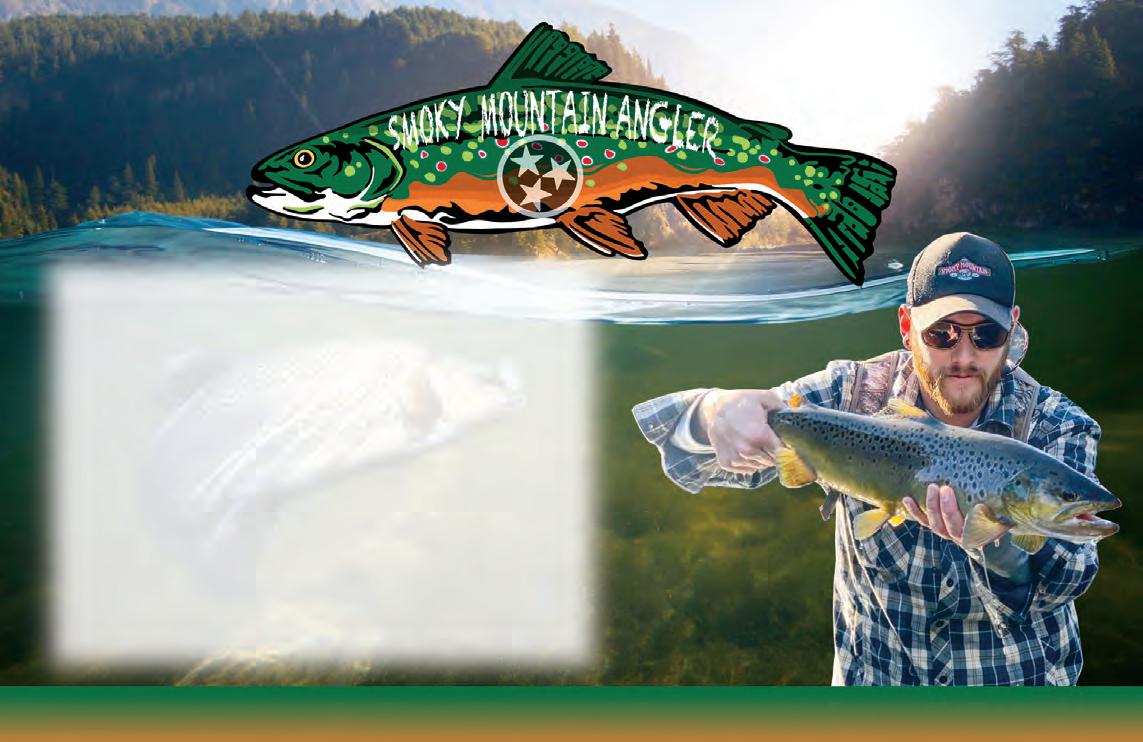
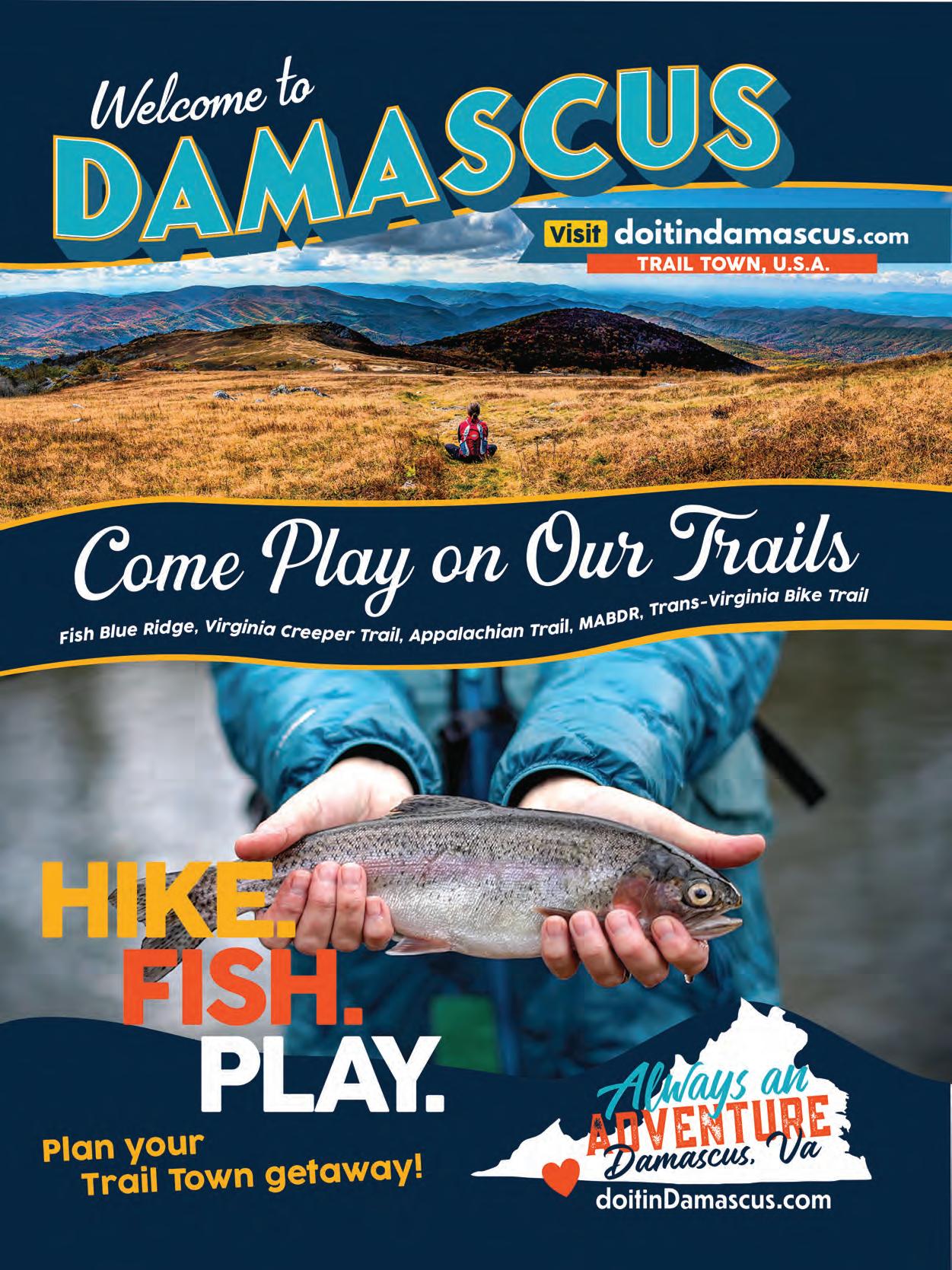
STRIPERS continued from page 4
So what’s the solution? Well you have to lower the numbers on the herring, and there’s several fish you could stock to accomplish this, with striped bass being at the top of the list. Not only are they a great sporting fish, but great eating as well. Stripers have a tendency to follow schools of herring and will eat pounds of these bait fish a day, thereby lowering the number so walleye have a chance to spawn. Hiwassee introduced striper a few years ago and it’s been a success story
Several people talked like our biologist was gonna help us out by stocking stripers, but last word I got, he was being stubborn and didn’t want to help us. So what I’m gonna suggest is for all Fontana residents an anglers to contact our state biologist and the higher-up, government powers that be and plead for help. It’s ridiculous to have a lake the size of Fontana and the freshwater streams feeding it and not get any help from the state to get it back on track.
Sorry for having to hear me whine, but really. As always take a kid fishing.
HUNTING continued from page 8
will move in waves just like the spawn. They will be spread out all over the lake and that’s why you need to have a moving bait of your choice tied on. The patterns will also change based on how hot the day gets, as well. It is a fun way to fish since you’re not dealing with bass that get shut down from the summer heat.
It is a great time to go, especially if you bring a friend that your introducing this sport to. The weather is cold in the morning and hot in the afternoon, so dress in layers and enjoy.
Scott Norton is a Western North Carolina native. Born in Asheville, N.C., he is a long-time hunter, angler and weekend warrior.
population size and genetic diversity, and reduce potential competition from non-native trout. The goals of these projects are to increase resiliency and redundancy of SABT populations by restoring habitat and SABT populations.
Resiliency: Enhance connections between SABT populations by improving water quality throughout watersheds, reducing sedimentation, removing barriers to fish passage, and enhancing aquatic habitat. Resiliency ensures that if environmental events decimate a particular population, SABT from other streams in the watershed can migrate to naturally re-populate impacted streams.
Redundancy: Even where SABT populations cannot effectively migrate, maintaining viable SABT populations throughout western North Carolina helps ensure SABT sustainability. Redundancy projects increase the abundance of SABT populations that have sufficient size and genetic diversity to ensure population viability.
Restoration: SABT population restoration consists of the introduction of SABT into fish-less sections of streams, and removal of non-native trout followed by SABT re-introduction. Sections of streams are selected for restoration by their habitat quality and the presence of waterfalls to prevent upstream migration of non-native trout.
Volunteers with Trout Unlimited chapters from across the Southeast help agencies and other conservation organizations document impacts, monitor brook trout populations, collect water quality and temperature data, and restore habitat. If you are interested in getting involved as a volunteer in the conservation of Southern Appalachian Brook Trout in North Carolina, consider joining your local chapter of Trout Unlimited (https://www.tu.org/chapters/north-carolina/).


By Perry Hensley

In May of 2025 I found a diamond in the rough when I ran across a listing on Facebook Marketplace. This 1988 Stratos 256 I must say a lot like myself she needed some work to say the least so like everything I prayed about this boat.
I messaged the owner and set up a time to come look at the boat that this gentleman was asking $450 for. After meeting with the owner a little bit it turns out I got to share my testimony on how I was once like this old boat I was interested in purchasing. I myself once was also sitting out in the weather (of Life)just wasting away in this world. That was until Christ got ahold of me and totally redid my life. Before I got away from the owner I had made a new friend and met a new brother in Christ and not to mention a new fishing buddy as well.
Before I knew it I left there with the boat for $200 and a set of brand new seats as seen in the picture. I’ve realized how God has changed my

life so drastically in the past 5 years due to his loving kindness through fishing. As I said , like the boat (I named Grace btw) God has reformed me to not only be obedient ,but as a useful servant for him as well like this boat I too was a wrecked, neglected vessel in need of much repair.
My goal is to use this boat as a vessel to relate to those in which I meet through fishing to help win them to Christ and to do my part in spreading the Gospel of Jesus Christ.
I started working on this project in early May and after a lot of hard work and frustration and help from my wife, my friends and especially my Savior I am finished and proud of her most definitely.
My hope is that you get out there and spend time in the great outdoors that our creator has given to each of us and make life long memories with those you love and respect. May God bless each one reading this as much as he has blessed me in my walk.


RALEIGH, N.C. (Sept. 8, 2025) — The N.C. Wildlife Resources Commission (NCWRC) advises that black bears’ eating behavior alters in the late summer through fall. They significantly increase their food consumption to prepare for the colder months when natural food is less available. It’s called hyperphagia and it means “extreme appetite.” Which means they are on the search. For food. And they are not picky eaters!
“In late summer through fall, black bears are consuming a variety of hard and soft mast species, from acorns and hickory nuts to pokeberry, cherry, grapes and black gum,” said Black Bear Biologist Jenna Malzahn. “They’ll also take advantage of agricultural crops, such as soybeans and standing corn, as well as bird feeders and unsecured garbage and compost.”
With this level of food consumption, which can last through early winter, bears can put on 3 pounds per day and gain anywhere from 20% to close to 100% of their summer weight!
Bears are opportunistic eaters. During hyperphagia, black bears travel extensively, sometimes beyond their home ranges, to search for food for up to 20 hours per day. This results in more chances for humans and bears to come in close proximity with each other. NCWRC experiences an increase in reports of bears in public and residential areas, in the woods and on roadways during this period. The agency suggests some ways to avoid bear encounters to help keep both humans and bears safer.
Bears are typically most active at dawn and dusk. Steps to avoid a vehicle collision with a bear or any wildlife include:
• If driving with a passenger, put them on wildlife watch.
• Always drive at a reasonable speed and follow the speed limit.
• At night, consider driving below the speed limit to give yourself more stopping time and scan the sides of the road for eyeshine at night.
• Pay extra attention in areas where bushes and trees are close to the road.
• Most insurance companies advise that if you see an animal in the road, honk your horn repeatedly, flash your high beams and try to avoid it if you can do so safely. Do not swerve into another lane or slam on your brakes unless you know you can do so safely.
Bearwise.org is a comprehensive resource that offers proven methods to avoid attracting bears. Six At-Home BearWise Basics for coexisting with black bears provide important steps to keeping bears from looking for food at or near homes and public places.
APPROACH continued from page 18
the tail. It also allows them to detect water pressure changes and other changes in a creek or stream, like murky water or rising water. Pressure waves in a stream are detected by trout and that is why it’s so important to move slowly, stay out of the water as much as possible, and always try to stay low and stealthy if possible.
Trout have all five senses so you are not facing off with just any fish. After a strike, and we miss the fish or the fish feels the fly; I tell my clients that they’ve had their shot. Seldom, will the trout come back again, it usually takes 48 to 72 hours for the trout to calm down and catchable again.
SLOW DOWN! I can’t say that enough. That beautiful hole you are wanting to fish may be 50 yards upstream, but you may pass up great water trying to get to it. Fish a spot, look upstream, plan and figure out where you can get into position without spooking the fish. Anglers are impatient, me included, but just observing and planning may put more fish in the net. I always tell my clients do not throw over a fish to get to a fish.
Do everything possible to minimize yourself on the stream. I don’t wear camouflage, but it’s usually something dark. If I do have to make a

“Even in warmer climates, such as our state, a bear’s biological clock will still activate this fall feeding frenzy, even for those bears that hibernate briefly or not at all, as natural food scarcity in winter months, not temperatures, has been a key driver for activating the hyperphagia and hibernation process,” said Game Mammals and Surveys Supervisor Colleen Olfenbuttel. “Even bears that won’t den until January or February still look for food practically around the clock and eat as much as they can find. However, in areas where bears have found dependable year-round supplies of human-provided foods, they may not hibernate at all but will eat as if they are going to.”
NCWRC suggests residents secure their property now to avoid bears denning there. Bearwise.org offers instructions to prevent denning in crawlspaces, or under porches and decks. Bears have been known to den and give birth under bushes and brush piles, or piles of building materials, vacant buildings, garages, storage sheds or vacation homes that are vacant over the winter.
Contact the N.C. Wildlife Helpline at 866-318-2401 Monday to Friday, from 8 a.m. to 5 p.m. or your local district wildlife biologist for questions or to report information about a bear incident.
For more information on black bears, visit Bearwise.org, including these resources: Bear Encounters - How to behave if you see a bear, What bears do in September - BearWise, What bears do in October - BearWise.
longer cast usually up an across, I keep the rod tip high getting as much line off the water as I can without moving the fly. A lot of guys roll their line upstream during a drift trying to help their presentation, but in my opinion that creates a splash and a lot of movement on the water that can spook fish.
Use the water and surroundings as much as you can. Trout vision in swifter water is always compromised so fishing a seam (where fast and slow water meet) can be effective, but requires an almost perfect presentation. Rocks, trees, even brush can be a perfect cover to get close to the water you want to fish. Roll casting works best on spooky fish. False casting only creates motion a fish may see or it may spook them. And remember where ever the cast lands on the water good or bad let it drift. Picking flies up and down on the water trying to get that perfect cast will spook trout fast than anything.
Practice your approach, find where you need to make that first cast, use rocks or trees as cover and always manage your drift.
Jimmy Lackey has been a guide for 10 years with Hunter Banks Fly fishing in Asheville, N.C. jameslackey9856@gmail.com 704-477-9856




October has traditionally been one of my favorite months of the year for a number of species, but especially for grouper. I’ve always said that Christmas week is the apex of grouper fishing…and it is. I’ve also said that there is a mental hierarchy in grouper, with gags being at the top and reds being at the bottom. I could catch a red grouper on a wooden dowel rod with menhaden oil on it and a hook attached…and that is not an exaggeration.
I hate to be repetitive, but a live pinfish on a Squid Decoy Jig is a dead ringer for red grouper (and all grouper for that matter). If you have the ability to keep a pinfish trap in the water, I would strongly suggest securing several dozen pinfish to take bottom fishing. Everything out there eats them, not to mention they are very hardy and will live all day in the livewell. Red grouper, gags and scamps all view pinfish the same as sailor’s choice and other small snappers as egg eaters. If for no other reason, they will eat them just to kill them, so they don’t eat their eggs. Frozen cigar minnows and sardines have caught more grouper (historically) than all the other baits combined. That’s what they eat!
Tim Barefoot
ice, fuel or weather.

We always had hundreds of pounds of (frozen) cigs and sardines, so let’s not get too carried away with the bait selection. Frozen cigs get the job done, but now that I’m fishing the super stealth decoy
10 seconds. Nothing down there can resist it. Period.
As I always say, “Find the bait, find the fish.” Yes, I like to fish structure like ledges, wrecks or live bottom, but the main ingredient is food. If you mark big stacks of cigar minnows, sardines, beeliners, etc., it’s always a good idea to fish below that, and keep the light line out on the surface or near the surface for all the pelagics. We have vast areas of sand bottom with no structure whatsoever. We just fished big stacks of bait and caught them GOOD! Red grouper can be caught in most depths of water. From as shallow as 15 feet on the Atlantic side to 400 feet and beyond. The only problem with fishing this style of jig and minnow combination is that you are definitely gonna catch gags, scamps, blacks— and those “endangered” American red snapper.

jig/bait combination, I do love a live pinfish or other live baits.
Please take a descending device and familiarize yourself with how to use it.
I guess that’s why I’m writing this article featuring red grouper this month; because that’s about all we have to fish for this time of year. So get out there with some pinfish and frozen minnows and harvest the red grouper and scamps.
On a commercial fishing trip (many years ago), if you ran out of any one of these four things, it would send you back to the Hill: bait,
With that all being said, don’t ever pass up the opportunity to jig up live cigs and sardines for the ULTIMATE combo! The life expectancy of a live cig or sardine on a Decoy Jig is under
Take your kids fishing, too, and make plenty of videos and photos that’ll last a lifetime.
Learn more from Tim Barefoot on his YouTube channel and at barefootcatsandtackle.com.

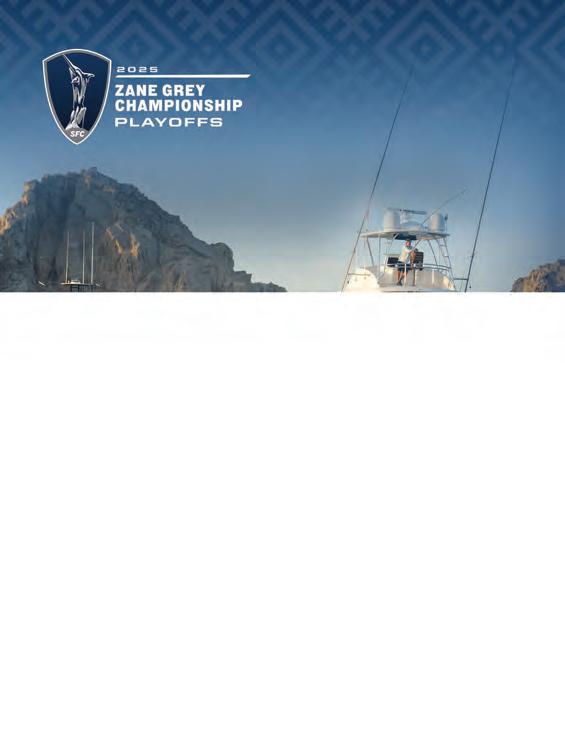

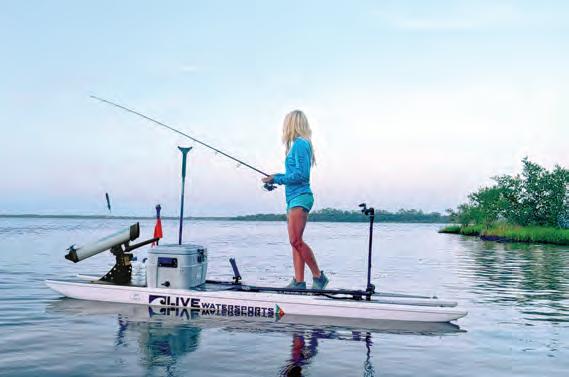

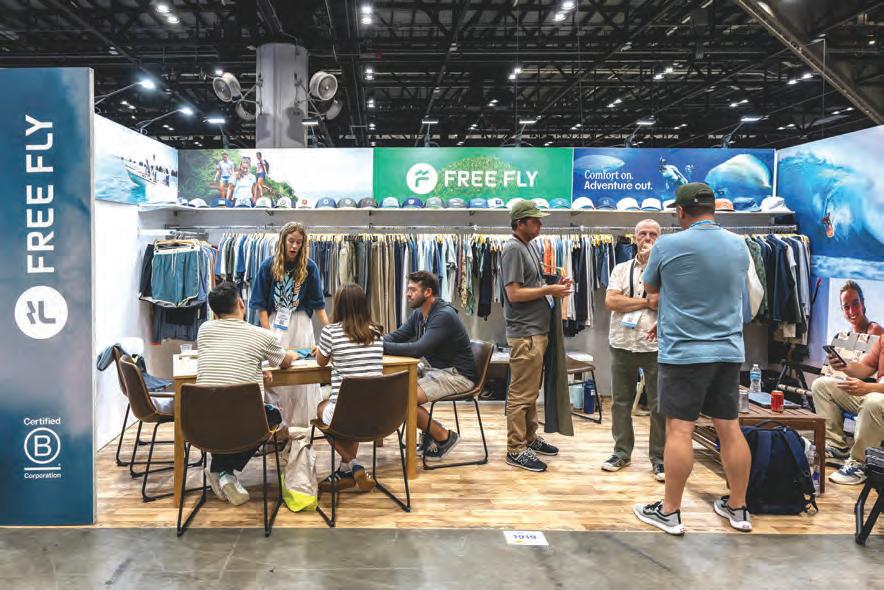
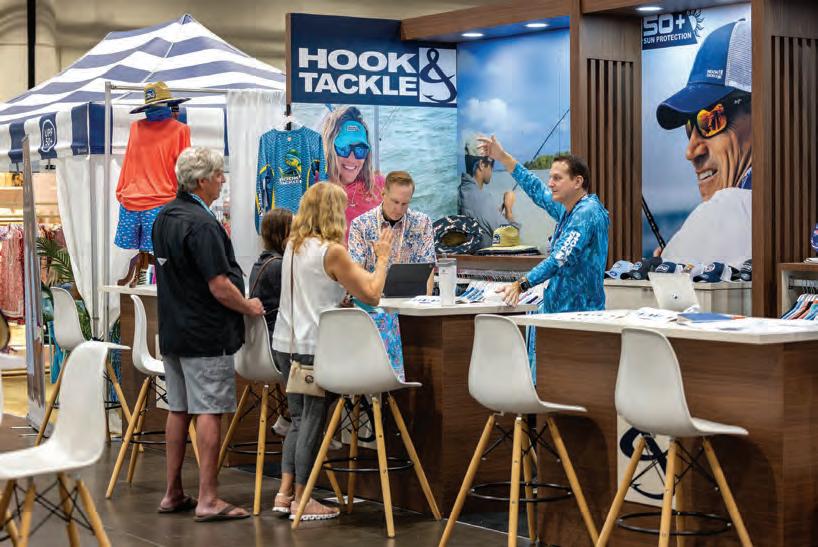
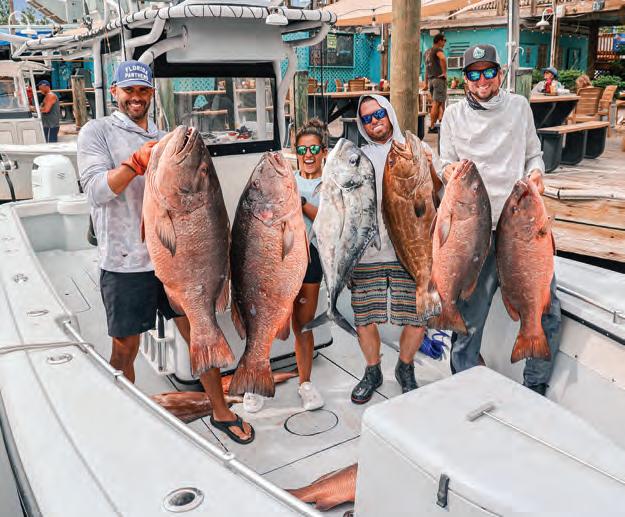
By Astrid deGruchy
When it comes to snapper fishing, the Florida Keys are hard to beat. From shallow mangroves to deep wrecks, these waters hold everything from tasty keepers to tackle-busting giants, and the right gear makes all the difference.
shrimp, pilchards, or cut ballyhoo for consistent action. Downsizing leader in clear water is key. On the reef edge, Yellowtail snapper are Keys gold. Target them from spring through fall using a PENN Slammer IV 4500 with 15 lb mono. Set a steady chum slick and free-line white baits like pilchards on a Mustad 1/0 J-hook. Keep your presentation natural since yellowtails spook easily.
For heavier hitters, Mutton snapper shine during the late spring and early summer full moons. Use a PENN Authority 5500 matched with 30 lb mono leaders and Mustad 3/0 to 4/0 circle hooks (Big Guns are the best). Drift live pinfish or pilchards back naturally, and be ready, when a mutton eats, it’s all power. For something more regal, head deep for queen snapper, the true royalty of the snapper world. These stunning red fish haunt 500-1,000 feet down along the continental shelf. A PENN Fathom II paired with 40 lb braid and a Mustad 6/0 circle hook tipped with squid or bonita chunks gets it done. Most anglers opt for electric reels, but handcranking one up is a badge of honor.

Mangrove snappers are the everyday staple, found year-round around bridges, mangroves, and patch reefs. Light tackle with a PENN Spinfisher VI or Battle III 3500 with 20-25 lb mono gets the job done. Use live


Then there’s the ultimate test: the Cubera snapper. Capt. Kody (@capt_kody) recently put me on a 65-pound Cubera out of Key West. These brutes demand muscle, like PENN International 50VISX, 80-100 lb mono + Mustad 12/0 circle hook type muscle. Summer full moons are prime, and whole lobsters are the bait of choice (yes, not cheap). Once you’re hooked up, it’s a brutal test of endurance, arguably the hardest fight you’ll experience on stand-up gear, especially when you’re handcranking every inch.
Out here, every snapper tells a story… from the quick hits of mangroves to the heartpounding brawls with cubera beasts. We live for those moments, and now you can too. Follow the journey on Bean Sportfishing TV on YouTube. If you are interested in a Cubera Trip, reach out to Capt. Kody Michael on Instagram (@capt_kody) or go to reel-guides.com






It’s no fish tale when you run with a John Deere. You can get everything done faster and easier, so you get more time on the water. Plus, our special offers make them the catch of the day.



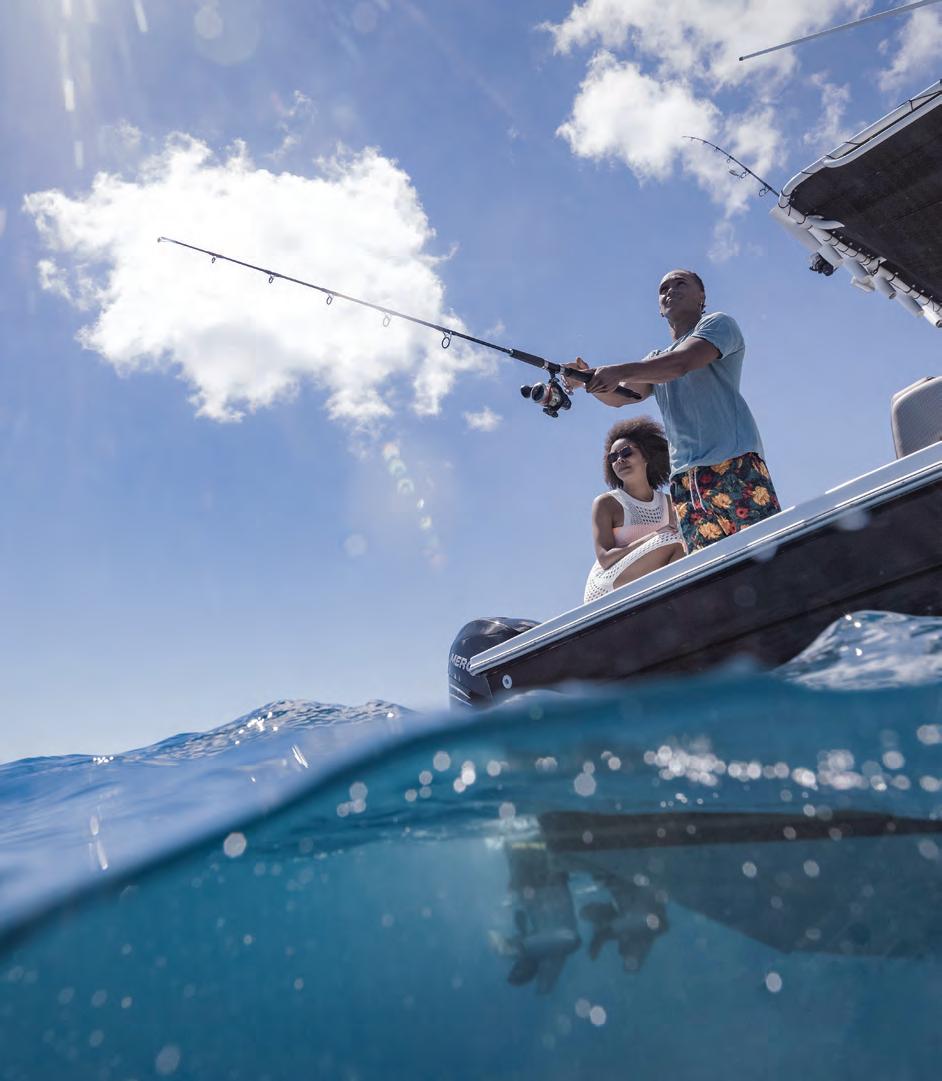
Nestled in the heart of the Caribbean, the US Virgin Islands embody a harmonious blend of natural beauty, cultural vibrancy, and laid-back serenity. These islands are more than just a picturesque getaway; they are a living testament to nature’s rhythm and resilience, effortlessly in tune with the world around them.
With no passport required for U.S. citizens, from the moment you arrive, the islands’ natural rhythm is palpable. The gentle sway of palm trees, the soothing sound of surf crashing against sandy shores, and the vibrant melodies of local music all echo the heartbeat of this tropical paradise. The islands’ lush landscapes, with their verdant hills and crystal-clear waters, mirror the steady pulse of life that sustains the local ecosystems and communities alike.
The US Virgin Islands’ environment is a symphony of biodiversity with world class fishing and diving. These natural elements are not static; they dance in harmony, influenced by the tides, wind, and seasonal changes—further emphasizing the islands’ intrinsic rhythm. This delicate balance underscores the importance of conservation efforts, ensuring that future generations continue to experience the islands’ natural cadence.
Culturally, the US Virgin Islands are equally in tune. The music, dance and festivals reflect a vibrant heritage rooted in African, European and Caribbean traditions. The spirited calypso beats
and reggae rhythms are expressions of life's ongoing dance—celebrating resilience, community and joy. These cultural expressions are an extension of the islands’ natural rhythm, showcasing how human life here moves seamlessly with nature’s flow.

In a world often dictated by chaos and rapid change, the US Virgin Islands serve as a reminder of the beauty of being in sync with nature’s tempo. Their natural, cultural and ecological rhythms offer







a blueprint for sustainable living and harmony. As travelers and residents alike continue to embrace this rhythm, they uphold a legacy of balance—one that celebrates life’s natural flow and the enduring spirit of these remarkable islands. In the US Virgin Islands, being in rhythm
way of life.
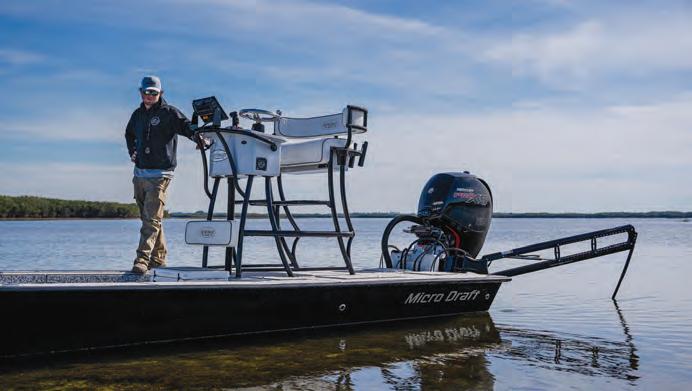




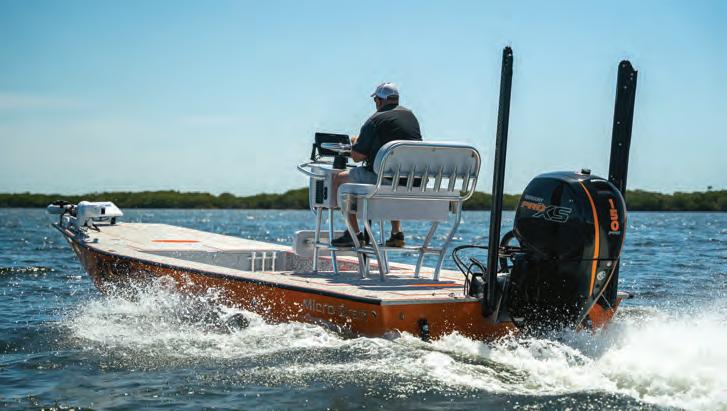

The North Carolina Wildlife Resources Commission (NCWRC) will implement Delayed Harvest Trout Waters regulations on 33 trout waters beginning Oct. 1. Under Delayed Harvest Trout Waters regulations, only catch-and-release of trout is permissible from program waters between Oct. 1 and June 5, 2026. No natural bait may be possessed, and anglers can fish only with artificial lures with one single hook. An artificial lure is defined as a fishing lure that neither contains nor has been treated with any substance that attracts fish by the sense of taste or smell. NCWRC staff stock Delayed Harvest Trout Waters from fall through spring with high densities of trout to increase anglers’ chances of catching trout. Delayed Harvest Trout Waters, posted with diamond-shaped, black-andwhite signs, are popular fishing destinations for anglers who enjoy catchand-release trout fishing. Anglers should be aware that stocking locations along streams may be different than in the past due to hurricane damage impacting the stocking truck and angler access.
For more information on trout fishing and stocking, visit ncwildlife.gov/trout and to follow the progress of the Setzer renovation, visit ncwildlife.gov/setzer.
